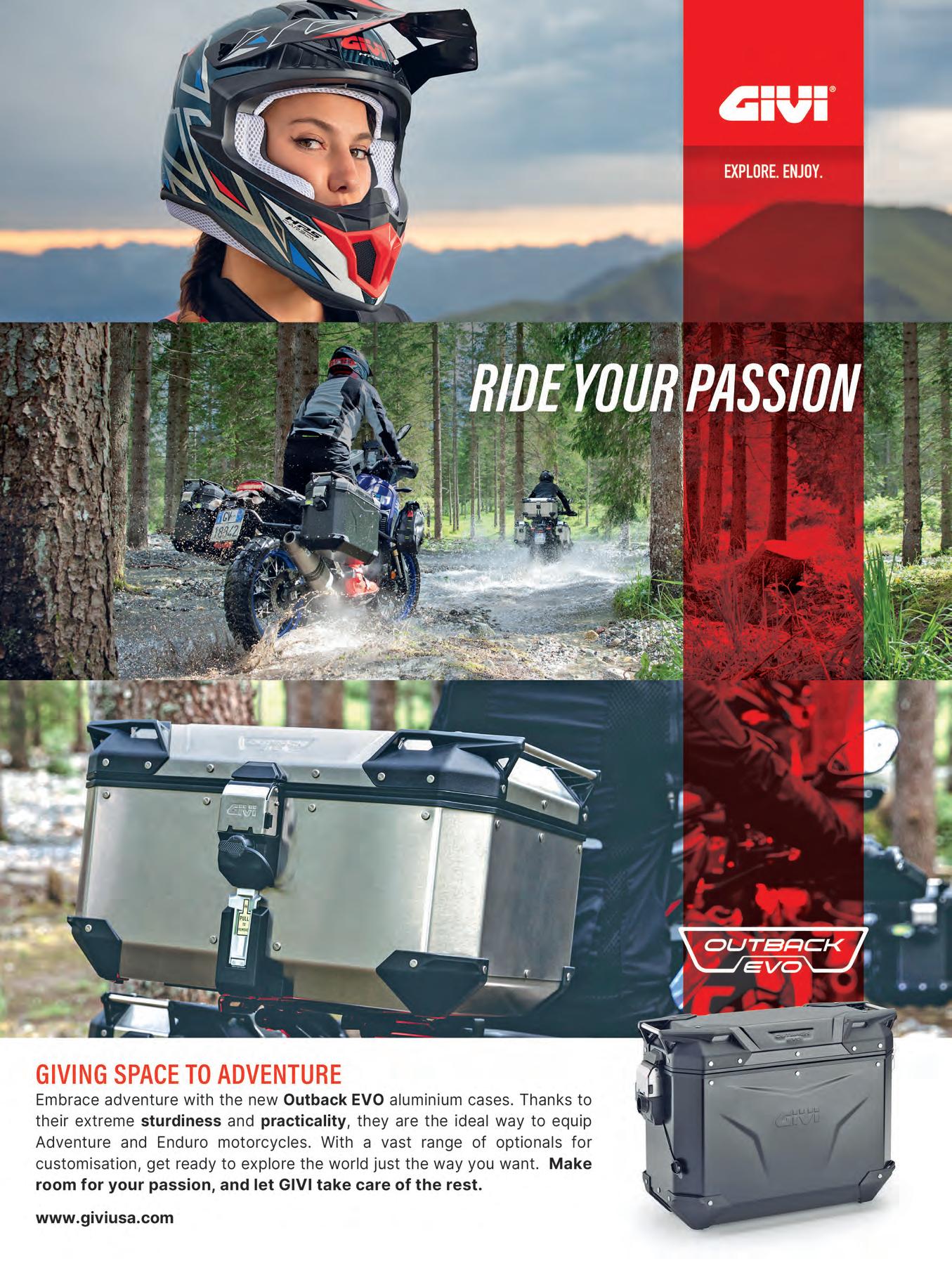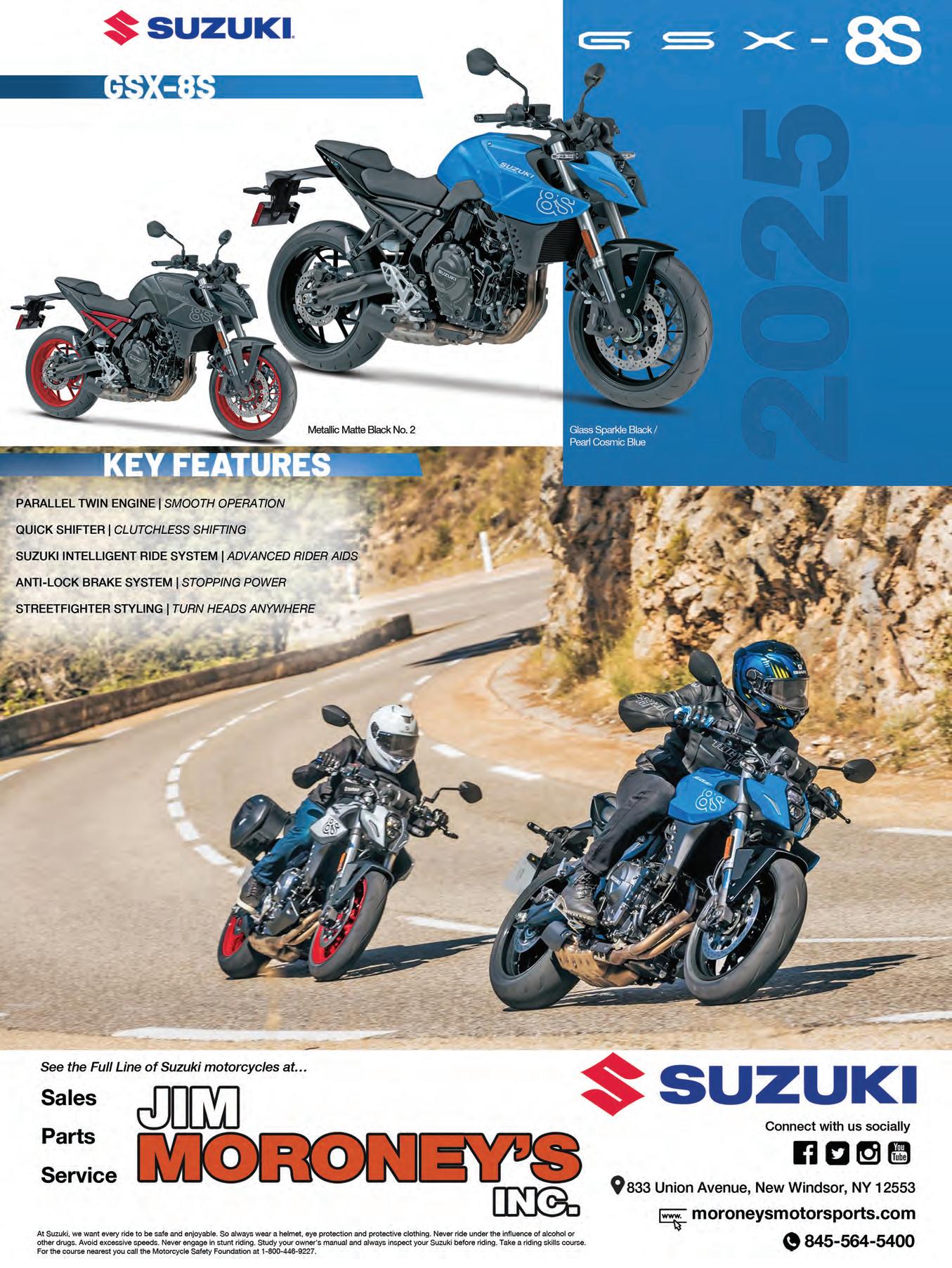











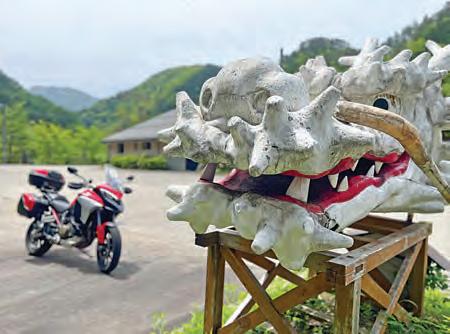
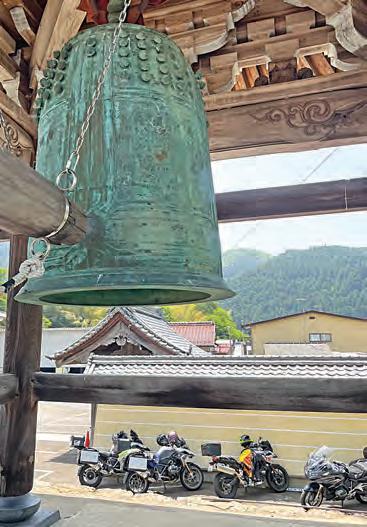
Brian Rathjen • Shira Kamil Contributors Mark Byers, Dr. Seymour O’Life Office BACKROADS 160 County Road 521 Newton, NJ 07860 phone973.948.4176 emaileditor@backroadsusa.com onlinewww.backroadsusa.com Advertising973-948-4176 Follow Us Backroads-Motorcycle-Touring-Magazine Post Us@BackroadsGal



BACKROADS (ISSN 1087-2088) is published monthly by BACKROADS™, Inc. 2025. All rights reserved. BACKROADS™ may not be reproduced in any manner without specific written consent from the publisher. BACKROADS™ welcomes and encourages submissions (text and photos) and suggestions. Include phone number with submissions. BACKROADS™ will only return material with enclosed sufficient postage. The written articles and opinions printed in BACKROADS™ are not necessarily those of the publisher and should not be considered an endorsement. The Rip &Rides® published are ridden on the sole responsibility of the rider. BACKROADS™ is not responsible for the conditions of the public roadways traversed. Please respect the environment, read your owner’s manual and wear proper protective gear and helmet. Ride within your limits, not over them.

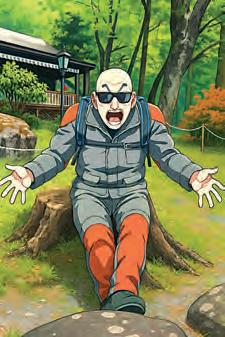
Let’s Go to the Video tape
Growing up in New York City the evening was often capped off by my dad watching the Sports with Warner Wolf.
Wolf was a staple of the Big Apple Sports World and when video highlights from out of town first became available, Wolf coined a phrase that was infused into New York’s sports lingo, “Let’s go to the video tape,” and became a steady late-night antidote; a diversion from a long New York workday. Wolf’s highlights were often commented on in the funniest way, getting laughs from audience and crew in the studio.
He made sports fun, and reminded all of us they were just games.
These days video and cameras images can be less than funny – maybe – depending on who is on the receiving end of them.
This story is about our friend Sandy, and a surprise she and her husband John received early last spring from friends in Spain.
But we’ll get back to Sandy in a bit, alright?
(Killing you Sandy, I know!)
Many years ago, we spent some time in the Alps, on machines that belonged to BMW in Munich. We had a great trip… Germany, Italy, Switzerland, and Austria… yes - Austria. A hardy, if stoic people. They have some serious traffic laws, as does most of Europe, but not the end of the world.
BRIAN RATHJEN
For the record the most severe traffic laws on the planet - Norway was ranked as the strictest country, with France second, followed by Colombia and Denmark. Norway achieved an index score of 7.09 out of 10. We had a multi-bike drag race on Pablo Escobar’s runway – so I had no idea that Colombia was so persnickety – but like New Jersey – everything is legal as long as you don’t get caught.
But these days you can get caught, prosecuted, found guilty, and sentenced before you land back in the USA.
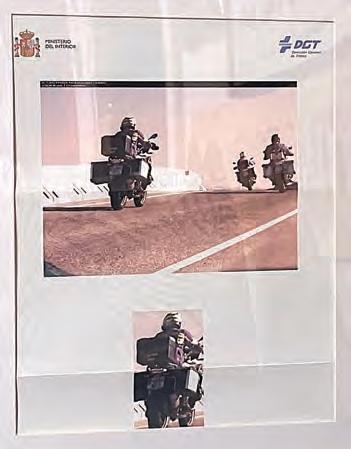
Mr Wolf? “Sure, Kid – let’s go to the videotape…” We had been home from the Alps for six months when I received an email from Woodcliff Lake, New Jersey - BMWNA. It was from my friend Roy Oliemuller who told me we had a traffic camera ticket from Austria… and could we please handle it?
I thought Roy was pulling my boot a bit, but it was followed with imagery (Munich plate that read something like M-IDIDIT), said ticket (in German), and the very kind warning that BMW in Munich needs this paid - now.
We had a friend who read, spoke, and understood German and she told us what needed to be done and how much we would be paying.
It was substantial. For almost a year I took the heat for this Austrian fine, and the constant ribbing from Shira about what I got in the Alps. I’ve got big shoulders and Shira’s traffic record is notorious… mine rather wimpy (That’s a good thing), so rib away Baby Doll.
Continued on Page 16


When I sit, you sit. When I kneel, you kneel. Et cetera, et cetera, et cetera.
King Mongkut – The King and I
This quote rolled around my head throughout our trip in Japan. While it was said, originally, in a quite serious manner by Yul Brenner in the King and I, it has oft been spoofed on Mystery Science Theater 3000 as well as referenced in Psych. You may rightly ask, ‘Why were you thinking of a catch phrase used by the king of Siam while in Japan?’ I will get to that, but in this context it will be used to fill in my thoughts and perceptions of The Land of the Rising Sun. 14 hours. Non-stop. Unlike Brian, I was not thinking of gas consumption but rather how much of that 14 hours I could spend in a restful sleep. I am one who has no difficulty falling asleep, almost anywhere, at any time. But the confines of an airplane seat, even with extra legroom, had me worried. After a movie or two, and reading a few pages of my Clive Cussler book, I donned my blackout mask and spent a good portion of the flight in a pretty good slumber. The flight home was a touch shorter and I slept even more, thanks to not eating whatever it was that United had to offer for their meals.
Speaking of food – that was probably one of the most asked questions about our trip –‘how did you find the food there?’ One word – amazing. I don’t think there was one thing

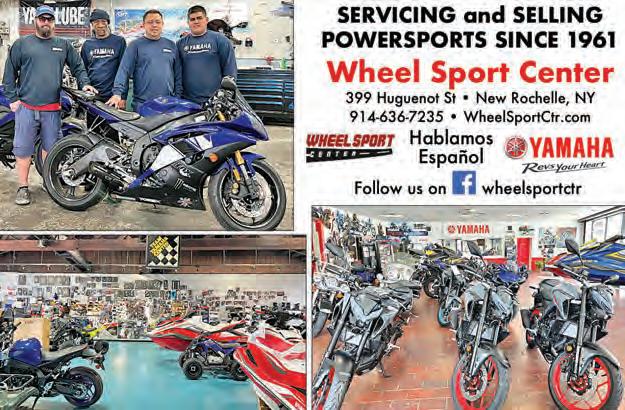



that I didn’t like. I suppose if you are averse to eating fish, you may have a slight problem. The sushi, sashimi and every piece of fish there was super fresh, flavorful and beautifully presented. Aside from fish, there was ramen, udon and miso along with waygu and kobe beef. The ramen was not the kind found in college dorm rooms pre pared on a hot plate – this was more culinary expertise. Fresh noodles, broth, assorted vegetables with spices that I had not seen before –some used on experimentation. And then there was tofu. I was never a fan, but that was simply because I had never had it prepared properly. One particular restaurant in Koya-san not only served a tremendous variety but it was so artfully presented that it was almost too pretty to eat – almost. No matter what was put in front of me, I tried it. Yes, there were some textural oddities – some jellied dishes that just didn’t ‘feel’ right in the mouth, but as far as taste, it was quite the experience. Cleanliness. In the 14 days we traveled I can honestly say that I did not see one bit of trash on the street, perhaps one small marking of graffiti and the only outside garbage cans were at the rest stops, which were marked with recycle/garbage/etc,etc,etc. In a country with so very many people, it was astonishing that the cities, especially, are kept so very clean. The carry in/ carry out principle is in full play, and I found myself with a pocket of papers and wrappers to throw out at the end of the day.
Continued on Page 16


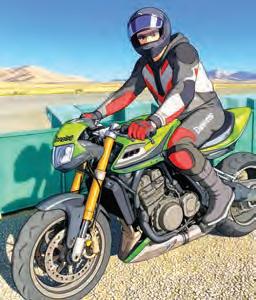
By the time you read this, I will have brought a 40-year career in Navy Flight Test to a close. I spent 20 years as a Flight Test Engineer (FTE), executing tests to see if our aircraft were safe and effective. I graduated from the US Naval Test Pilot School as an FTE, where I spent the toughest year I ever loved sharpening my skills. In my career, I flew in 25 types of aircraft, from two-seat trainers to the mighty F-4 Phantom, in which I went from 5,000 to 30,000 feet in 58 seconds in full burner at 0.95 Mach. I saw 25 Test Squadron Commanding Officers come and go. My projects took me to Sicily and the Philippines and all over the US. A gratifying thing was helping to select and test the new T-6A/B primary trainer for the USAF and USN, then seeing multiple of my colleague’s sons and daughters safely get their wings in that aircraft.
The next 20 years were spent as a Branch Head, recruiting, hiring, training, and leading younger people. A high-ranking woman in our organization called me a “servant leader” and I took that as the highest compliment. I have had 54 employees in my career and hired at least that many more for others. It wasn’t always easy: two of my folks got arrested (it ultimately turned out OK). I went to
court to support one who was assaulted. I had someone threaten suicide and the organization put the responsibility for response on me, but we talked it out and that person later went on to have a brilliant career. I’ve had others “ride the struggle bus,” professionally and emotionally, and we largely worked things out. Most of the ones who left did so for good reasons: they got promotions or their military spouses got reassigned.
The national average for women in engineering is about 17%, but I’ve had the honor of a 33% average. I didn’t set out to make that happen: I just hired the best people I could find and there they were. I’ve had both Iranian and Bosnian Muslim women employees, unusual for Defense, and both were fantastic. One Navy wife was from Madrid and she gave a formal little bow and called me “Don Mark” during her interview, something I loved and didn’t discourage. I mentored a Mexican protege in English and she still calls me “Don Mark.” One of the most determined people I know, she struggled with English at first and now she asks me grammar questions that have me diving into the books. One lady didn’t like the salty language in the office, but instead of making a big deal about it, she set up an incentive plan where she baked desserts if they behaved. When use of the bad words fell below her threshold, she simply lowered the threshold! I wish I could tell you all the great stories. Recruiting has been pure joy: the organization liked the people I was hiring, made me a recruiter, and what a blessing! One

Continued on Page 16

Mazel tov on your first (and fabulous) 30 years! I’ll never forget your start back in our Englewood days. You both shared a dream and pursued it. This lavish, lovingly written and illustrated anniversary issue is a testament to your skill, wit and perseverance. I know that Mr. Seymour O’Life (the one and only) would be so proud to keep popping up in your pages. Keep on rolling.
Always,
Barb
Big congrats on the milestone anniversary, Brian! I know it’s been a lot of work, but I also know it’s a labor of love. You and Shira should be really proud of what you’ve done!
Cheers,
Kevin Duke
Brian & Shira, I was touched by Mark Byer’s heartfelt story of the unfortunate illness of two dear friends.
Many of us have a long-time rapport with a favorite restaurant that has grown into a friendship with the staff and owners. It’s sad to hear when illness strikes a well-liked, and hard-working business family. Best wishes to the family.
Joe Giuffre
Shira & Brian,
As usual, I read Backroads cover to cover. I enjoyed catching up to my friend Jack Broomhall, who has been involved in the annual vintage bike show as his local dealership for over a decade. Great coverage with plentiful images to support the story.
Burt Richmond
Backroads,
Didn’t see the print story till Friday but thanks! Fun story - yesterday I got a call from old buddy Burt Richmond who saw the story in Backroads and never knew that I had been doing this Modern Classics show for over a decade.
Your reach is further than I knew! Be well.
Jack Broomhall
Greetings Brian and Shira from over at Paulinskill! Although I do not personally ride, and I had to give up being a passenger due to back problems, my family has always been riding. At last count I think my son has at least 6 bikes in his garage.
I read Backroads cover to cover every month. I get such great inspiration for places to go and things to do! Based on stuff I had read and mentally filed away, last summer we went to the Bear Mountain Butterfly Sanctuary,
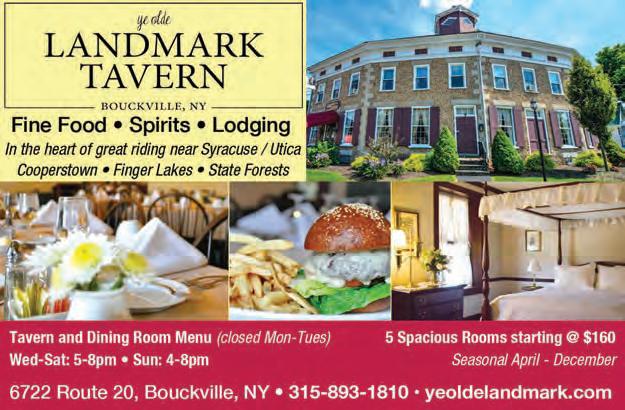
enroute to Eagles Mere. Primary destination was the Auto Museum. Oh my gosh! The museum was jaw-dropping amazing! We were so glad to find out about it, thanks to you!
We didn’t stay in Eagles Mere, but instead got an Airbnb with gorgeous views, truly off the beaten path on a mountain top near Canton. Thus we

went through World’s End State Park as we traveled back and forth to Eagles Mere. And so, as you know, we went past the Forksville General Store a few times. I think it was the phone booth at the edge of the parking lot that initially caught my eye. We didn’t go in the store, but noted the sign for their bbq chicken and thought maybe we should get some later for supper. However, my brother and his wife were going to meet us at the Airbnb and said they would bring the meal. They searched all over for a grocery store in the Eagles Mere area without much success. So, lo and behold, they stopped at the General Store and brought chicken for supper!
You mentioned the General Store in your July issue, and I’ve been meaning to write in about our great experience in that area ever since. I just retired from Selective this month and finally have the time to do some corresponding. Better late than never for sending you much kudos.
Jeanne
Hi, Hope all is well. Do you still do the “Its A Jersey Thing” ride? Thank you.
Anthony Falvo
Hi Anthony,
All good at Backroads Central and hoping the same in your world. The Backroads 250, or ‘It’s a Jersey Thing’ ride, was a one-time event, but you can certainly ride it any time you like. Here is the .gpx file: www.sendspace.com/pro/dl/0duq1z
See ya on the road!
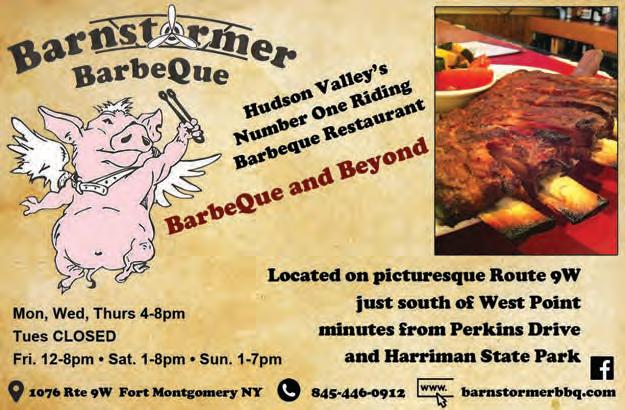
Motorbooks, the distinguished publisher of best-selling transportation books, proudly announces its 60th anniversary. For six decades, Motorbooks has been the go-to source for car, motorcycle, and motorsports enthusiasts, offering unparalleled insight, breathtaking photography, and authoritative content.

In 1965, transplanted Englishman and lifelong car guy Tom Warth launched a modest mail-order business selling automotive books from his humble Minneapolis, Minnesota, garage. Initially selling transportation titles, many of them imported from England, Warth was soon publishing books. Motorbooks quickly developed a reputation for high-quality, authoritative content with leading automotive authors and photographers. Since its founding, Motorbooks has publishedcoffee-table books by the world’s leading transportation writers and photographers. Its catalog features anarray of titles officially licensed by major partners such as NASCAR,Motor Trend, Harley-Davidson, Ford, and others. These partnerships have allowed Motorbooks to bring enthusiasts closer to the heart of their favorite brands.
“Over the past sixty years, Motorbooks has become a staple in the lives of transportation enthusiasts worldwide,” said Zack Miller, Group Publisher. “Our commitment to quality and our passion for all things on wheels have driven us to deliver exceptional books that educate, inspire, and entertain our readers.”
To celebrate this milestone, Motorbooks is planning a series of special events and promotions throughout the year. Fans can look forward to exciting new titles, and exclusive promotions paying homage to the rich history and exciting future of transportation publishing.
Leaders from across the powersports industry convened in the nation’s capital on April 8 for the 2025 Powersports Capitol Hill Fly-In, holding 95 meetings with members of Congress and their staffers. The annual event brought together staff and member company representatives from the Motorcycle Industry Council, the Recreational Off-Highway Vehicle Association, and the Specialty Vehicle Institute of America to advocate for the millions of Americans who ride motorcycles, ATVs, and side-by-sides. Participants met with lawmakers from 29 states to share the industry’s position on a range of federal issues, including tariffs, trail funding, public land access, and regulatory developments.
“This was my first Capitol Hill Fly-In,” said Ashmore Ellis, CEO and Founder of Babes Ride Out and Babes in the Dirt. “It’s a powerful thing to know that you belong here, to see competitors in powersports come together for the greater good.”
Ohio Rep. Troy Balderson, Co-Chair of the House Motorcycle Caucus; Utah Sen. John Curtis, a member of the Senate Motorcycle Caucus; Michigan Sen. Gary Peters, Co-Chair of the Senate Motorcycle Caucus; and Wisconsin Rep. Tom Tiffany spoke to associations’ members and staff about their own passion for powersports and the $50.9 billion industry’s impact on their states and the U.S. economy.
Representatives from Americans for Free Trade, the Coalition for Recreational Trails, the National Association of Manufacturers, the National Retail Federation, and the Outdoor Recreation Roundtable also spoke.
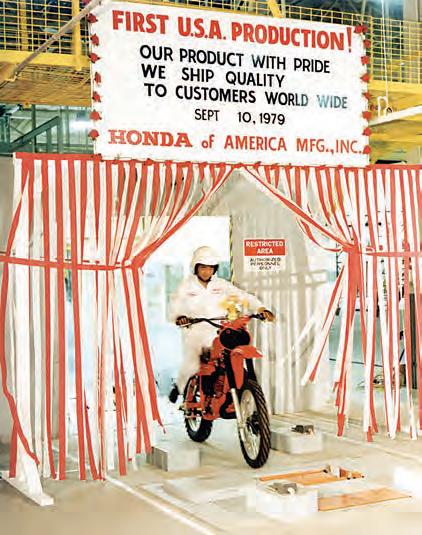
Honda’s cumulative global production of engine/motor-powered motorcycles has reached 500 million units, 76 years after the company began mass production of motorcycles in 1949 with the Dream D-Type. The milestone was commemorated today during a ceremony at the Honda Motorcycle and Scooter India Private Limited facility, in India’s Ahmedabad District.
Since its foundation in 1948, Honda has developed and offered products and services that meet the needs of customers in many countries and regions, based on its belief that the purpose of technology is to make people’s lives easier. American Honda Motor Co., Inc., was Honda’s first overseas subsidiary. The wholly owned sales division of the parent company, Honda Motor Co., Ltd., was founded on June 11, 1959.
Honda began international mass production of motorcycles at its first overseas production facility in Belgium in 1963 and, since then, has expanded its production globally in accordance with its fundamental principle of producing locally where there is demand. Honda began North American production of motorcycles in 1979, at the Honda of America Mfg., Inc. plant in Marysville, Ohio, where 64 associates began producing the CR250M Elsinore dirt bike. That first motorcycle rolled off the production line on September 10, 1979.
The middle of May was the deadline for KTM to avert irrevocable insolvency proceedings and one the company has met with the help of an 800 million euros ($905 million) debt funding package arranged by its Indian partner brand—and substantial shareholder—Bajaj. Now Bajaj has confirmed that it intends to take control of KTM subject to regulatory approval.
An initial 200 million euros ($227 million) had already been handed over to keep KTM going during the insolvency proceedings, made up of four tranches of 50 million euros each, but an additional 600 million euros ($680 million) has now been provided, covering the amount needed to bring KTM out of insolvency. At this stage, the money is considered a loan, but with regulatory approval it will be converted into a controlling stake in KTM and its parent, Pierer Mobility AG.
That money now goes into the hands of the bankruptcy court, which will hold onto it as KTM’s restructuring plan is rubber-stamped, before giving the money to KTM’s creditors as a one-time payment representing a 30% quota of their overall claims. That’s the minimum allowed under Austrian law to stave off bankruptcy, and while it means KTM’s creditors will wave goodbye to 70% of the money they’re owed, it’s substantially more than experts believe would be recouped if KTM was declared bankrupt and liquidated to repay its debts. Time will tell. .
So here is a Mysterious America riddle for you. What do two British surveyors, an American-born Quaker who looked to be King of Afghanistan, the last Lenni-Lenape native, an insane asylum, a cemetery of the forgotten, and a small non-descript part of Pennsylvania have in common?
According to the web, Embreeville is an historical unincorporated community, little more than a rural stretch of road with a few businesses and homes, in Newlin Township, Pennsylvania, United States, on a bend of Brandywine Creek. It is beautiful—the perfect place to live. Quiet, and peaceful, and not much else…unless you begin to peel back the onion that is Mysterious America.
First, let’s look at the Man Who Would Be King.
Josiah Harlan, Prince of Ghor. Harlan was born to Quaker parents in 1799. Inspired by the adventure books he had read as a child he soon traveled the
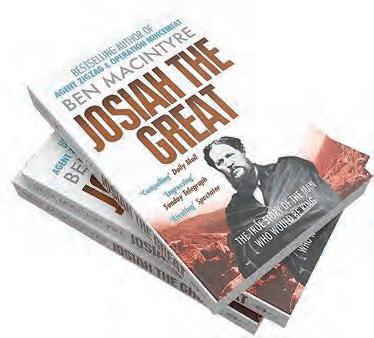
world attempting to make himself a king.
During his travels, he became involved in local politics and factional military actions. He claimed he was awarded the title Prince of Ghor in exchange for military aid. Rudyard Kipling’s short story
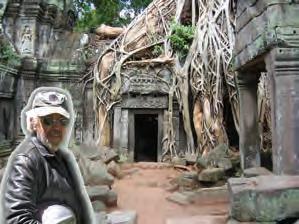
The Man Who Would Be King is believed to have been partly based on Harlan. After fighting with warring tribes in Afghanistan, he was given the title Prince of Ghor. He returned to the United States and received a hero’s welcome.
Years later the state felt the need for a giant hospital for the “Feeble-minded;” the kind that seemed all the rage back in the late 1800s.
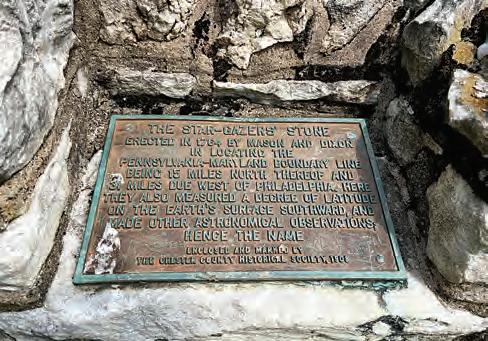

Embreeville State Hospital was a psychiatric facility that operated from the early 20th century until its closure in 2010. Originally established in 1912 as the Embreeville State Village for the feebleminded, it was built on the same land that Josiah Harlan once called home. It expanded over the years to serve patients with various mental health issues. The hospital, like many similar institutions, faced controversies related to patient care and deinstitutionalization. There, abuse allegations began to surface — reports of rape, drugging, and assault. In 1994, a year after the U.S. Department of Justice sued Pennsylvania over the allegations, a settlement came: Embreeville would close. Just a few years back all the buildings were demolished, and today the Natural Lands’ ChesLen Preserve takes up the ground along the Brandywine Creek. On its grounds, you can

still see the old “Potter’s Field” where hundreds of the poor and forgotten have been laid to rest. When you add in the souls lost in the drubbing we took from the British at Brandywine, this place has to have some interesting mojo, I would think.
Despite how it may look today, Embreeville was once a center for scientific discovery; and directly across from the now “happy’ nature preserve you will find one of the most important stones in American history.
When Charles Mason and Jeremiah Dixon were commissioned to settle a border dispute between Pennsylvania and Maryland, it was Embreeville that served as a key location for astronomical observations. A small stone wall stands surrounding a large stone dubbed the Star Gazer’s Stone, which was used as a reference by the famous team in making their observations.
The Mason-Dixon Line (the northern boundary of Maryland) was to be 15 miles south of the southernmost house in Philadelphia; right where fans start rooting for the Orioles, and say Y’all instead of Youze. On January 7, 1764, after finding the latitude of the Plumstead Huddle House, the astronomers picked out a place 31 miles westof Philadelphia at the Harlan’s Farm in the same latitude in “the forks of the Brandywine.”
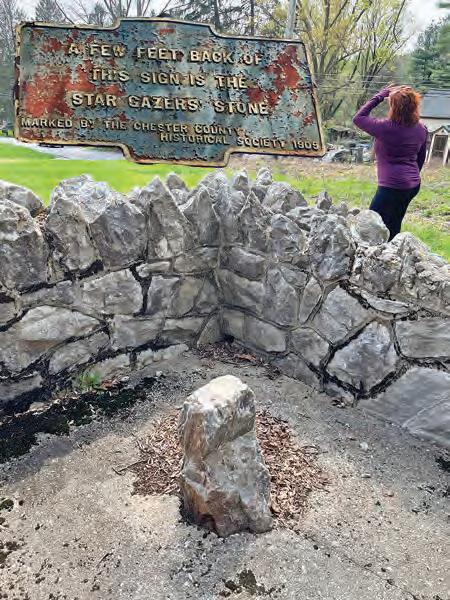
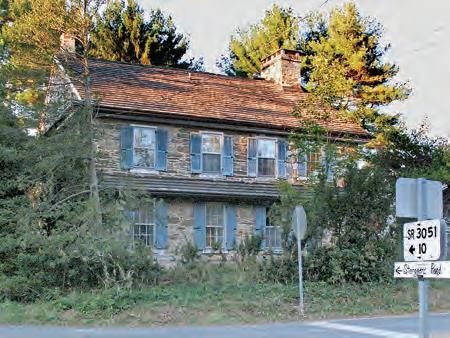
They spent two winters here.
The Setter’s quartzite stone known as the “Star Gazer’s Stone” has long been believed to mark the site of Mason and Dixon’s observatory in the forks of the Brandywine. In 1908, the Chester County Historical Society placed a wall around the stone bearing a bronze plaque. Mason and Dixonused this spot not only to locate the boundary for which they are known but to measure the length of a degree of latitude for the Royal Society, a scientific contribution toward determining the size of the earth.
Just a stone’s throw north you will find another Historical Marker – this one to a woman known as Indian Hannah – believed to have been the very last Lenni-Lenape native to have lived (and died) in Chester County. Hers is a story in itself for another month.
The 1724 house now at the corner of Embreeville Road (SR 162) and Stargazers Road (SR 3051) became Mason and Dixon’s headquarters during their work for the Penns and Calverts.
It is a big country out there, kiddies, and it is amazing, and astonishing that all of this happened in just one tiny spot on the map that runs through Mysterious America. O’Life Out! ,

Frazetta art MuseuM
141 MuseuM road , east stroudsburG, pa 18301 www.frazettamuseum.com • 570-242-6180
thursday – suNday, 10 aM – 4 pM • $15/pp
‘Every so often there are watershed artistic experiences that seem to come at just the right time, which occur as if people had been waiting for them without knowing it. Hearing the Beatles or Jimi Hendrix felt that way; making me think ‘This is just the music I’ve been waiting to hear!’ So it was when Frazetta’s artwork erupted into the world: it was art we had been waiting to see without knowing it, realized by one of the most singular talents of our time.’
Michael Whelan from the forward of Fantastic Paintings of Frank Frazetta
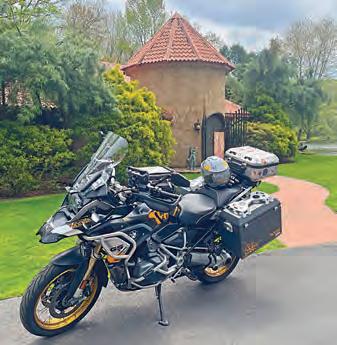
Perhaps it is that I am getting older and, regardless of admission or not, I have begun to relish in some of the things that set my life on the course it has taken. Although I have curtailed my motorcycle and guitar snatching habits, I have begun acquiring other things, and thinking about it I know that maybe I am just circling back a bit.
I would be hard-pressed to say when I first discovered the artwork of Frank Frazetta – but it probably was about the same time I discovered the writings of Robert E. Howard and Edgar Rice Burroughs.
Painted by my imagination, and the book’s amazing cover art, like any other 12-year-old – I wanted to be anywhere but Woodside. Frank Frazetta’s brush made it all so much more real.
As I read these books on a stoop in Queens, the other guys made fun of me. They all grabbed safe 9 to 5 jobs, and Union positions from families.

daytrip ideas to get out of the daily grind
I took to a bike, the modern version of a stallion, and went thataway… and the route on that old map has led me back here; here being a tight driveway off a road in the Pocono Mountains.
Welcome to the Frazetta Art Museum.
Frazetta was born in Sheepshead Bay, Brooklyn in 1928, and as a young child was encouraged by his grandmother who had realized that this child had a young, but undeveloped talent. She would give him pennies to continue drawing for her.
By the time he was eight, his teachers had also seen this young boy’s talent and he attended the Brooklyn Academy of Fine Arts, and as he grew older he began
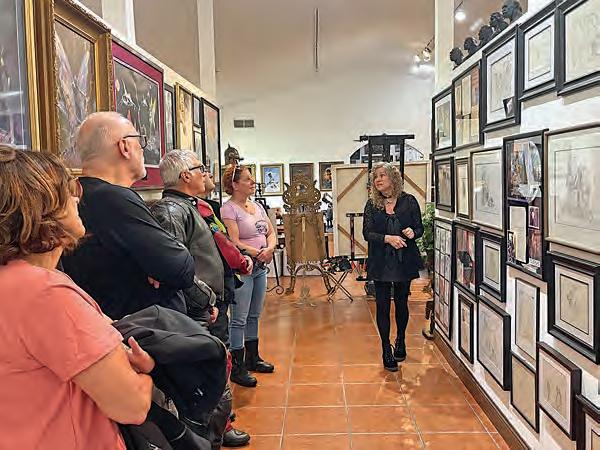

to work in the comic book industry, and spent six years penciling for Al Capp’s Lil’ Abner. Over the years his talent and style would grow as big as the heroes he would paint.
In 1964 he did a parody of Ringo Starr for Mad Magazine. This led to the film poster for
What’s New Pussycat? – where he made a year’s salary (well, that year) in one week. This led to more and more solid work, and then a certain sword-wielding Cimmerian came riding on a roan steed. Perhaps Frank looked up at the giant of a man, as he drew his sword, pointed it at Frazetta, and then laughed out loud, “By Crom, boy – I am here to change your life.” And, by Mitra, Conan did.
With Frazetta turning towards Fantasy and Sword & Sorcery his talents would explode onto the scene. He would make every lover of pulp and action rethink how things could be, and how exciting life could be imagined, and lived.
Soon everybody wanted Frank Frazetta, and he was, and still is, one of the most famous modern-day artists known.
Frazetta Factoid:
In 2009 Kirk Hammett, the lead guitarist for Metallica, bought Frazetta’s cover artwork for the paperback reissue of Robert E. Howard’s “Conan the Conqueror” for $1 million.
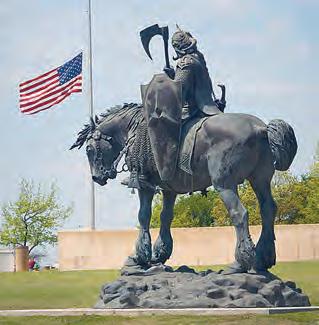
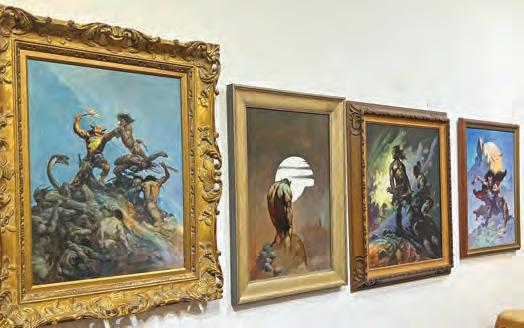
In the midst of all this Frank, his wife Ellie, and their children moved from Brooklyn to the then fairly rural Pocono Mountains, where he rebuilt a cabin and created a large studio for himself. The legend grew. His Death Dealer was used by Molly Hatchet for their covers, and the United States Army III Corp adopted it for their mascot. One life-size statue of it now stands in what was Saddam Hussein’s palace, the other in Fort Hood, Texas. He was the Godfather of Fantasy Art. Frazetta passed away at 82 years old, in 2010, and today his family celebrates Frank’s life and art in the Frazetta Art Museum.
We have begun making a habit of bringing friends to and mentioning this wonderful museum often, but thought a full article on the Frazetta Art Museum was way overdue. Besides I had an empty shelf to fill, and this was the place to fill it.
Frazetta Factoid:
Frazetta’s painting of the Egyptian Queen was the direct inspiration for Princess Leia’s costume when held by Jabba the Hut in Return of the Jedi. The original painting sold for $5.4 million dollars in 2019. While there, we were given a tour by daughter-in-law Lori, and met with grandkids Frank III and Noel.
The museum showcases Frank’s art from his early child drawings to his larger-than-life fantasy creations. The tour was very informative, and we seem to pick up a bit more information each time we go.
I particularly enjoy watching friends as they stroll around the aisles of Frazetta’s works, especially when I know they think I had dragged them there. (Ha, by Ishtar, they’ll know when I drag them). You can almost see them go from slightly curious, to interested, to realizing what they are looking at, and then become true believing fans of Frank Frazetta.

Frazetta Factoid:
On the motorcycle front, Frazetta was tasked by American Honda Motor Co. with artwork to coincide with the release of the Valkyrie Rune. These were only available to dealers who placed a qualifying order for the new bike. It ran as a billboard in
If you are a sword & sorcery fan, a lover of great American art, or simply looking for something fun, interesting, and different to ride to and explore then we highly recommend the Frazetta Art Museum. Take the the tour, say hello to the family – they are all very friendly and welcoming.
But, if you run into a large warrior with jet-black hair and steel-blue eyes… do whatever he tells you, okay? ,

spriNG diNer
221 spriNG street, NewtoN, NJ 07860 973-579-1711 • www.springdiner.com
With the Great All-American Diner Run, we sometimes get off track from the basics. Looking back over the years we have always tried to bring you a wonderful combination of food, flair, fun roads, and feeling.
Depending on the town - we can almost always find some good roads, but good food sometimes seems hard to come by.
We can attest that this is not a price or feeling thing – as sometimes price gets equated with good, and that is not anywhere near the truth.
We’ll take comfortable, family-owned, with the occasional grandchild zooming by, over haughty, smug, and self-absorbed any day.
The point of this opening ramble relates to the Sussex County Seat, which is Newton, New Jersey. The main street, called Spring Street, has been going through a bit of renaissance over the last decade. The Newton Theatre is a great concert venue (Todd Rundgren was the first show), and our beloved Bennie’s Bodega can be found on Spring Street as well. Along this small one-way street, you can find the huge and colorful Newton mural, a mix of odd shops, and a few restaurants. As we just alluded to, the Great All-American Diner Run does not need big, fancy or faux gentrification to get to us… small, sincere, and delicious will bring us back again and again.


tasty places to take your bike

You could easily miss the Spring Diner, even with its bright and cheery white DINER lettering on a Dodger blue background. We were aware it was there, but when we had to meet up with some riding friends one Saturday morning, we thought we’d give this little place a chance.

We were more than happy with this decision. There usually is easy parking to be found, and strolling into the Spring Diner was a little TARDIS-like; as it was a lot bigger inside than we thought, with eight booths, a couple of double tables, and a small counter. The red tile floor sets off the Gulf blue walls where you will find historic photographs from Sussex County’s past, as well as a collection of odd 45s.
At the counter were some locals, folks that were well aware of what we were about to learn – this tiny diner rocks!
All the counter talk stopped when a bunch of us walked through the door with riding gear in hand, and the waitress, Giselle, looked up with a smile and did a Wanamakers

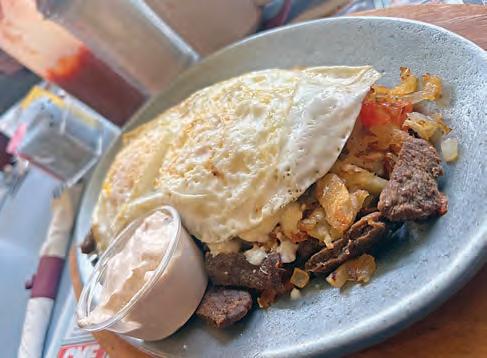
quick head count and she, and a little boy, had us all set before the last of us had meandered in.
The menu here at the Spring Diner, that is open 7-days a week from 7 am till 3 pm during the week and till 9pm on Friday & Saturdays, was more than up to the task for our group.
If you ride in for breakfast 21 different omelettes are on the menu – including pastrami, western, and corned beef. Their specialty omelettes are truly special, with a superb Florentine with fresh spinach and feta, a Greek, when you add tomatoes, and a delicious offering called Crazy – which adds gyro meat into the Greek. Yummy.
For those that feel the need at this time of year, try the Spring Diner’s Summer omelette that has grilled chicken, avocado, and tomatoes folded together and topped with a creamy Hollandaise sauce.
They also offer wraps and some nice skillets – sticking with the Hellenic ordering that was going around the table there was an order for the Greek skillet. If you wish to stay on this side of the Atlantic try the Mexican, vege-
table, or meat lovers (you do not have to sit next to each other, okay?)
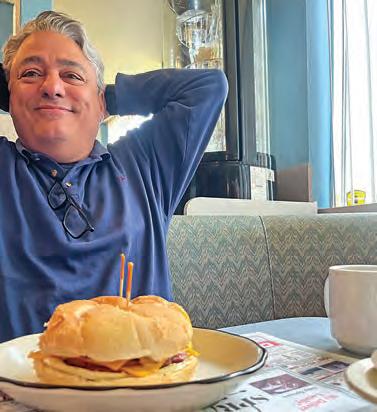
For those easy-to-please a good old breakfast sandwich will bring a smile too.
Everyone was ordering breakfast, but there is always that one guy… Rick ordered a tuna sandwich…. That is the 738th time he has ordered the tuna. It was all good. No, better – it was delicious.
Further down on the lunch menu, the Spring Diner has a copious number of hand-held and triple-deckers. The menu continues to fill out with a half-dozen different burgers to be found, and an array of Mexican dishes too. To wash all this down you might order up their old-fashioned egg cream. It all makes for a very excellent, very family-run and friendly diner that rides back to this column’s roots.
As always, we will give you a great ride to bring you to a late breakfast or early lunch. This 110 mile ride is just a stretch of the cables to a great meal. Enjoy and we’ll see you on the road. , www.sendspace.com/pro/dl/ligtaj

iNdepeNdeNce day
biG box Vs. oLd schooL
Henry was on the road all day, and his route had taken him fairly far away from the bigger roads, and the omnipresent interstates.
It was summer, so he had a buffer of light, yet still liked to be in before dark, and hopefully somewhere close to a restaurant. A restaurant with a bar was a plus, but not a deal breaker. He had started to think about a room around six, but an hour later he still had not come up on anything remotely looking good.
He began to think he should begin to worry. Maybe he’d have to make a deal with a demon to get a room that night. Then traffic began to pick up, and a few miles later he rode into a real crossroads that butted up against an exit on one of the bigger roads. Now instead of being happy there might be a room – he now had his choice of motels – and chain restaurants – one on each corner of the intersection. He rolled it around in his mind and went with that one. No Faustian bargain needed tonight boys.
a
Meanwhile in an Alternate Universe…
Henry was on the road all day, and his route had taken him fairly far away from the bigger roads, and the omnipresent interstates.
It was summer, so he had a buffer of light, yet still liked to be in before dark, and hopefully somewhere close to a restaurant. A restaurant with a bar was a plus, but not a deal breaker.

He got a room. It was nice. Okay. Just like the 40 rooms on that corner, and over there on that corner, and the other 80 across the road. Dinner was provided by Sysco – so it was passable, and each of the four chains, one on every corner, had a version of the same items on their menu, but probably called it something different, or at least changed the font on the menu. It’s America… sadly.
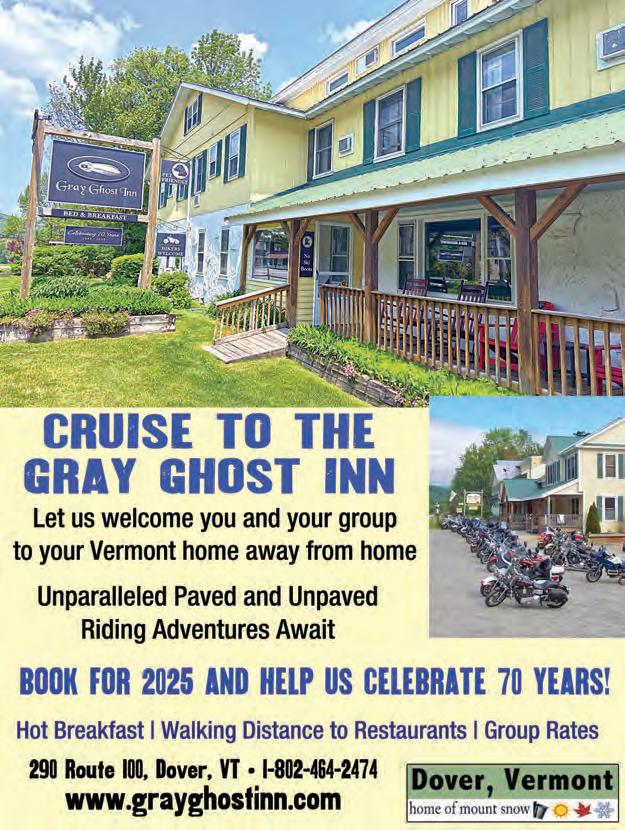
He had started to think about a room around six, but an hour later he still had not come up on anything remotely looking good.
He began to think he should begin to worry. Maybe he’d have to make a deal with a demon to get a room that night.
Then traffic began to pick up, and a few miles later he rode through a crossroads in the center of a small town, Old School, that was not on his radar. Off to the side was a cluster of low single-story buildings, and a small separate office with a bright sign glowing neon red -VACANCY. He took one of these rooms, for a reasonable price, he thought too; no need to summon the dark side for a room this day.
After he had settled in, he asked the cocoa-skinned gal at the desk front desk where a good place to eat might be found. She smiled and told Henry, “Just down the road about two blocks. Mario’s Family Restaurant – so good,” she said with that syllabic rhythmic accent that sounded so pretty coming from this smiling motel gal.
She was right, Mario’s was very good – all homemade, and the attention to detail was incredible, as was the chianti. Great night’s sleep and Henry was back on the road after a cup of morning coffee and a light complimentary breakfast. Henry thought what a lovely little town, and great people. He could live here.
About an hour later he passed through the town of Big Box with their

Motel 4, 5 & 6, Econo Lodge, and inns Knight, Hampton and Days. On one corner was WaWa and Lowes versus Quick Chek and Home Depot – and on the hill, a Walmart Super Center stood like a watchman over the town of Big Box. Henry had filled his machine back in Old School, having a great motorcycle conversation with a senior local who used to have an Indian back in the day, thus he made a quick exit from Big Box – that looked way too much like so many other towns in the United States.
If you were in Henry’s saddle – in which universe would you want to be riding?
Right. That was an easy question.
There were 25,544 independent hotels in the U.S. at the end of 2022, representing 1,511,716 rooms. These independent properties make up about a third of the estimated 60,000 hotels in the United States. These days about 40% of independent motels are owned by Asian immigrants, particularly of Indian origin.
Sometimes on the road, you might find yourself in a position of taking what you can get – but we have found that with rare exceptions (like Spark) with Chains – each link looks pretty much the same. Sure, it is just a room, and just a night – but the privately owned and independent motels in the country can offer so much, and will usually add a footnote to your travel story that the Chain Motels cannot – no matter how bright that light they left on for you shines.
Just looking back over the last few seasons we’d like to point out some excellent indie hotels (Sorry not a pun).

Our friend Michelle runs the most excellent Starlite Motel in Big Indian, New York – right in the middle of some of the best roads in the Catskills. Trust us, it ain’t the New York State Thruway.
Up north last summer we stayed at a neat motel created from a farm and barn decades back called the Lake Ontario Motel, right south of Newfane and the Great Lake. Clean, friendly with wonderful flowers; we featured it in our September issue last year. The owner Paige and her family offer the overnight rider a feel that they will never get in Big Box.
You can find that same sort of independent motel right here at the top of New Jersey at the High Point Motel. Just south of the state park with the same name – the High Point offers much, has never gotten a bad review, and our beloved Elias Cole is right down the road – with made-from-scratch food and made-from-heaven pies.
While touring you have a choice – you can stay in Big Box or Old School. It’s up to you. ,
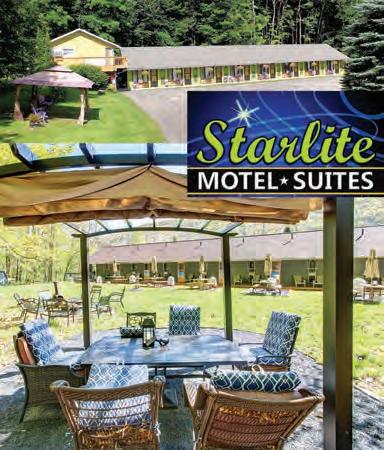
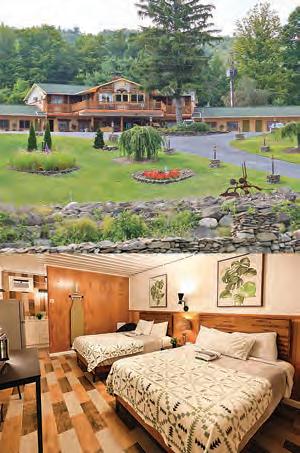

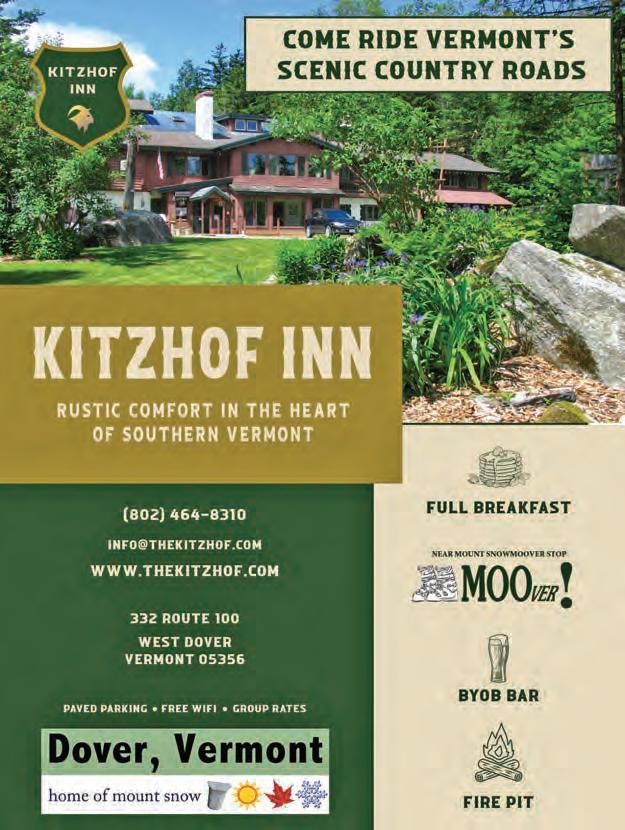
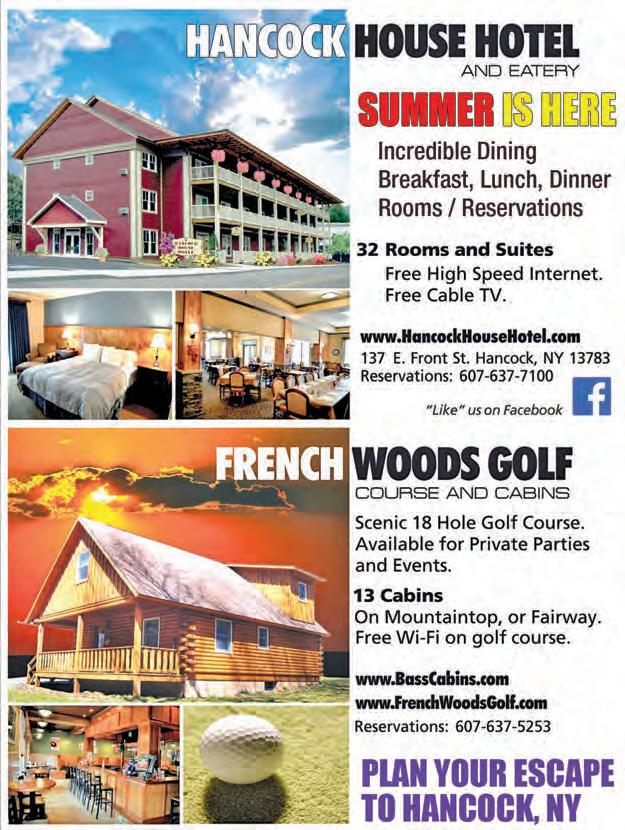
Free wheeLiN’
Continued from Page 3
But, a bit down the road I was going through imagery and there was a picture of Shira and my bikes in the Alps.
Oh my God. There were our bikes from that trip – Mine with a Munich license plate that read something like M-NOTME, and Shira’s – plain as day - Munich plate M-IDIDIT!
WooHaa!
I thought this was one of the best turn of events and innocence found since Tom Tom was freed from Bogeyland.
But…oh, remember Sandy – who can forget her – Backroads’ loveliest PR Gal!
Well, John and I were in their garage, as riders often end up during gatherings, and I spotted two images, framed neatly on the wall.
One, of the awesome Sandy astride a GS in Spain, and next to it …” Warner? “Hey that’s right, Brian – let’s go to the videotape!”
When they returned from Spain the Spanish government – ironically in Valencia, home to one of the fastest races on the planet – had sent Sandy a happy, but pointed, reminder of her then-unknown infraction.
Cleary her plate - B-IDIDIT2 - had her as the guilty party of the two, with John’s plainly read Spanish plate - NOPE - clear to see.
Clearly, we should stay away from fast women in Europe – or if we can’t do that hope we can always got to the videotape.
Warner Wolf Signing off! ,
oN the Mark
Continued from Page 5
time, I offered a young woman a job and the reaction and smile made the lights in that room get brighter, closely followed by tears of joy and an immediate phone call to her parents. I hired a guy by phone and I could feel the elation through the line. Giving a young person their first job is like being Santa and the Easter Bunny all rolled into one - the energy is amazing. Recruiting and teaching are two of the things I am going to miss the most, but no one is irreplaceable. A man wants to leave a legacy and our people are my Magnum Opus.
That was my vocation and now it is time for my avocations, or as I call motorcycling, my occupassion. If you need a moto pilot to carry someone, I’m your huckleberry and I have multiple bicycle event moto jobs lined up already. I will still write for Backroads and hopefully find more time for Diner Runs and Big City Getaways. It will be liberating to be able to join the Summer Solstice and not have to worry about how much vacation I’m using! In one column, I threatened to get on my moto and randomly head for a compass point: I intend to make good on that. I hope to see more of “the family” and be at some of the events in the Northeast on which we’ve had to pass because of our distance. Shakespeare said, “All the world’s a stage, And all the men and women merely players; They have their exits and their entrances; And one man in his time plays many parts…” It’s time to play the next part, dear readers. ,
whatchathiNkiN’
Continued from Page 4
Respect on the road. Speaking of cities, and traffic, which we saw going in and out of Tokyo and Kyoto especially; for the most part everyone ‘played nicely’ and there was only one or two incidents of very mild road rage, which I think came from vehicles with ‘out of town’ plates. Honestly, as a group I think we were probably the worst offenders as we utilized lane-splitting (which is not really a practice in Japan) quite often and in pretty tight situations. We were split into two groups of 6-7 bikes each, so the ‘staying together in the city’ was made just a little bit easier.
ETC, ETC, ETC. Each motorcycle was fitted with an electronic toll collector, and we went through quite a few of these tolls along our routes. Where we see E-Z Pass notices on the toll lanes, Japan has these marked with large letters – ETC. I began hearing Yul Brenner in my head each time we passed through one, interspersed with refrains of Getting to Know You and Shall We Dance.
Final word – toilets. Every single bathroom had a bidet. Life changing. We were home one week and had one installed. ,
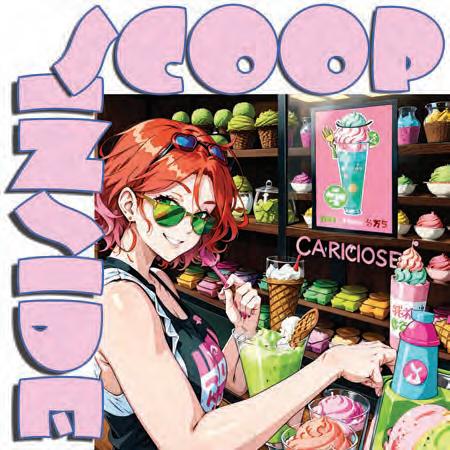
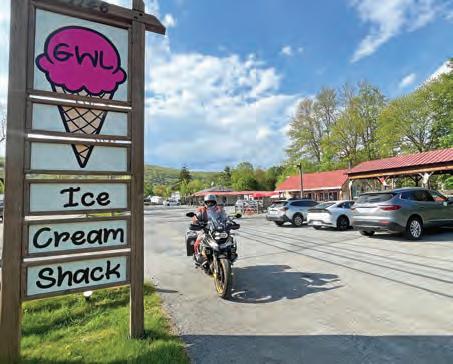
GreeNwood Lake ice creaM shack 1146 route 17a, GreeNwood Lake, Ny 10925 • 845-595-1668 • gwlicecreamshack.com
SeaSonal HourS apriltHru october: every day noon to 9pm
When I was just starting my riding days, I worked in Ridgewood, NJ. I would take my bike to work often and, during lunch, would forego eating to go for a ride. With a clocked hour, I would head towards Ringwood, Harriman and that area, as the roads were pleasantly twisty and gave me some good experience to hone my newbie skills. Living in Englewood, NJ, Brian and I would use this area as our ‘backyard’ riding for a quick run when we had a short time to enjoy a ride. Now that we are in Sussex county, we hardly get to this area for a fun run but usually when on the way to somewhere else. I have fond memories of my time spent riding around Greenwood Lake, Harriman and the reservoir.
On one of our early spring rides this year, we happened to be back in this neighborhood and, right before taking our right to continue on Route 17A we passed a sign featuring an ice cream cone. As the day was warm and the sun was high (and there was ice cream) we pulled into the parking lot to satisfy our sweet tooth.
GWL Ice Cream Shack is a local spot on the banks of Greenwood Lake, open seasonally from April through October, giving folks a pleasant respite to enjoy some delicious Hershey’s ice cream or a light snack. They have a nice open setting, with plenty of parking, situated on one great piece of asphalt. There is ample seating, covered and not, to relax off the bike for a bit and refuel body and mind. The creatively decorated ‘shack’ and surrounding area makes for a very whimsical time, complete with cartoon pigs and cows. To pass the time, there are games of corn hole and tic tac toe to challenge your skills.
Their menu offers so much more than your typical cup or cone, although no one will fault you for going that route. Their rotation of Hershey flavors include everything from Award-Winning Chocolate and Old-Fashioned Vanilla to Graham Central Station (one of my favorites), Dark Chocolate Raspberry Truffle (also one of my favorites) and Cappuccino

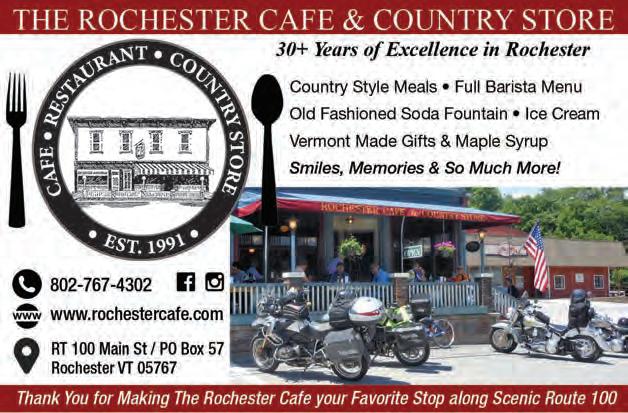
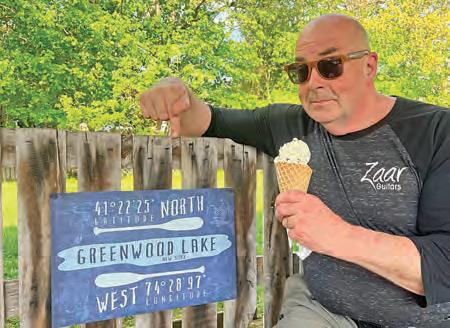
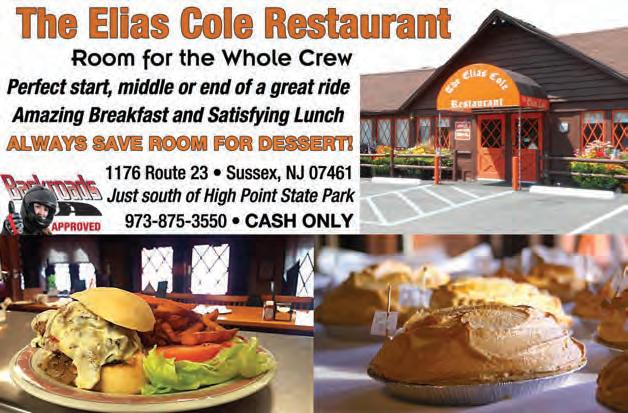

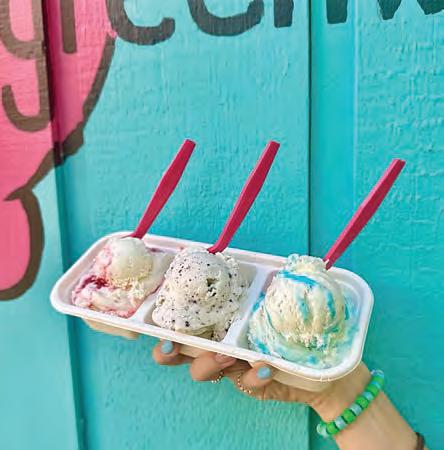
Crunch (yup, that one too – notice a pattern?) The toppings are extensive, starting with Andes Mints and going through the alphabet to Wet Walnuts, with almost everything under the rainbow in between. Want something more creative? The sundaes – your choice of flavors – can be topped with blueberry, caramel, strawberry or one of their specialty options of Cookie Monster, Peanut Butter Bonanza or S’Mores. If you like your ice cream through a straw, their shakes can be made with any flavor ice cream, Black + White or Malted, as well as an old fashioned egg cream. I’m not sure what their ‘Razzle’ is, but I’m guessing it may be akin to a DQ Blizzard, as the mixin list has many candy options. Can’t decide? GWL
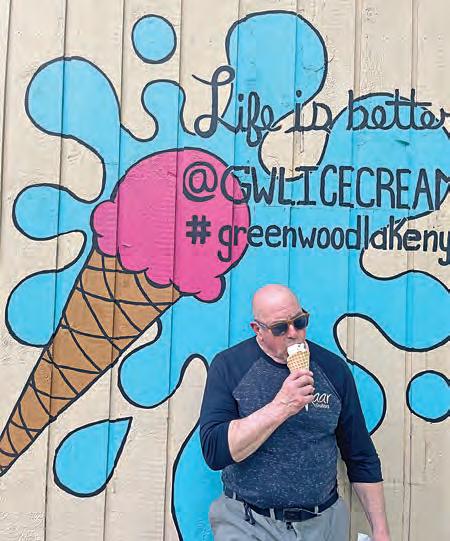
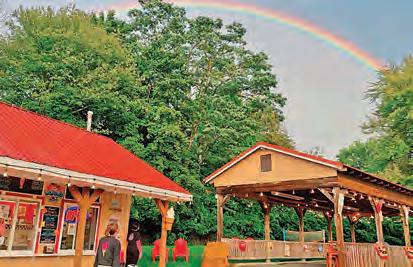
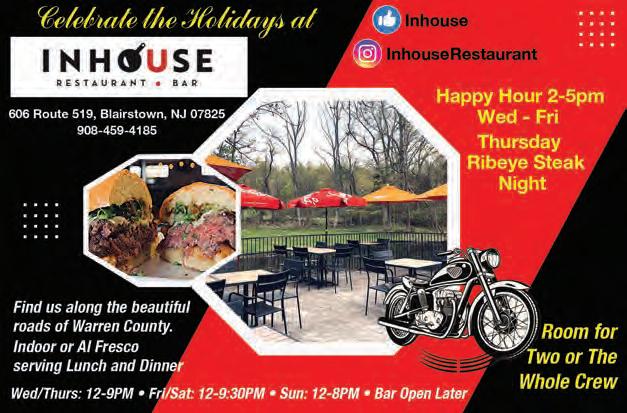

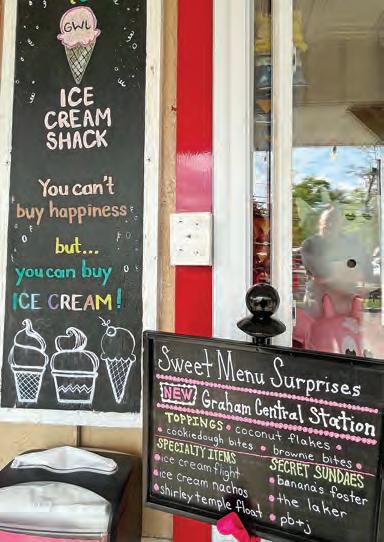
also offers Ice Cream Flights of three different scoop flavors. Are you a dipper? Then maybe their ice cream nachos will fit the bill. In addition, they have a specials board. During our visit the Secret Sundaes included Bananas Foster, The Laker and PB+J.
Should you find yourself in this neck of the woods, or lakes, take a break, grab a treat, and relax at the Shack - there’s always a rainbow. We’ll see you on the ice cream trail. ,
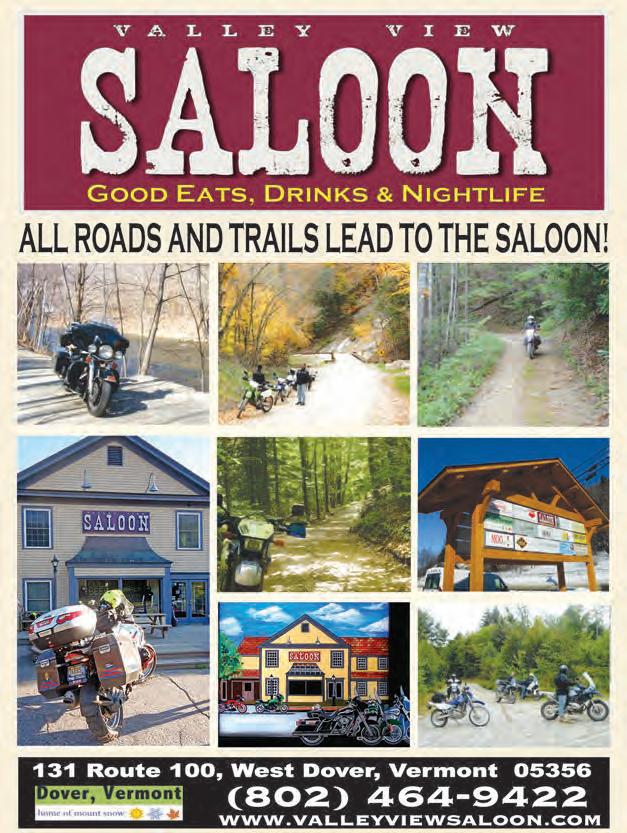
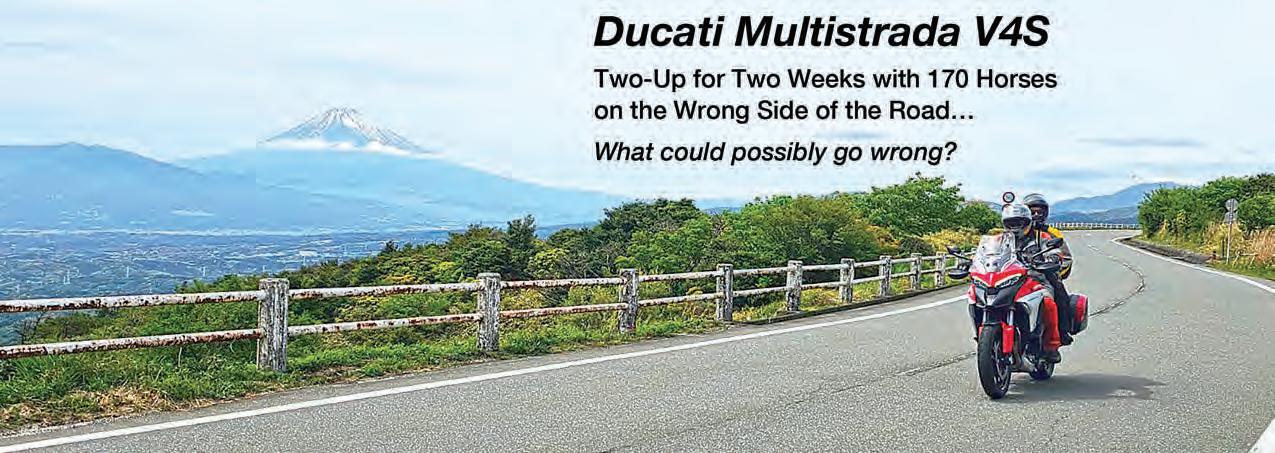
Well, the quick answer was nothing. Although I have had a friend try, for a good bit, to cajole, entice and inveigle me into taking his Ducati Multistrada V4S for a long ride – I have avoided this as I do Corvette dealerships, all-gal campuses, and most guitar stores. No need to have “stupid thoughts” come my way. I am plenty stupid by myself, thank you. But, in Japan, this was the bike we would be riding; albeit a later 2024 version, and not the 2025 machine which has had some slight upgrades to some of the electric packages, and styling.
This Ducati was barely broken in, and came shod with fresh tires, and full 5.8 -gallon fuel cell – we were ready to ride.
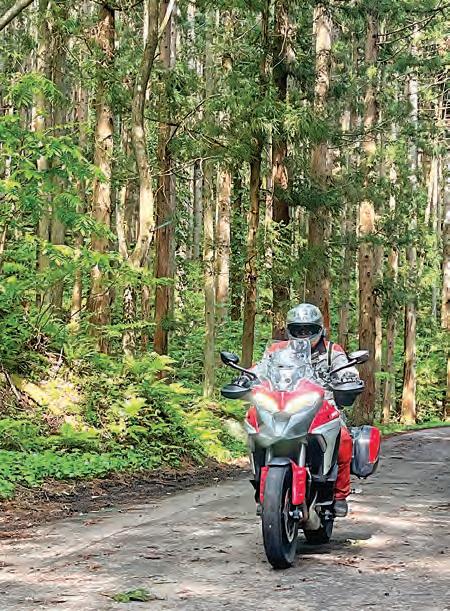
This Ducati’s engine is derived from the Desmosedici Stradale unit found in the Panigale V4. This engine punches out 170+ horsepower, and the Multistrada V4 S already has a Panigale V4-shared braking system, featuring 330mm front discs and Brembo Style monobloc calipers. At the rear there’s a 265mm disc with a Brembo floating caliper, and the whole lot works with a Bosch-Brembo cornering ABS setup.
So, you know that this is a serious machine – that can go and can stop. But it is all the stuff in between that really matters. Right?
After two weeks, and two thousand miles we can eas-
ily say – Heck, Yeah! I could go on with all these technical details, cut and paste would make that easy – but why not just “cut” to the chase here?
The Ducati Multistrada V4S is a very, very impressive machine. Of our group, there was only one other machine carrying a pillion, and the

26-year-old Madison, from Brooklyn, New York, by way of Atlanta, riding behind her father Mike on a BMW R 1250 GS, was a tiny package (and an awesome co-pilot). Shira and I are, umm, larger and come with a thicker molecular structure. From a passenger point of view, Shira LOVED the Multistrada from the first ride. This is incredibly rare. Please note that she is one of the few and rare riders, I know, who can actually sit comfortably in the pillion seat without having a meltdown or just go to sobbing in her helmet – and do this for more than two weeks. She found the Ducati to be well-suited for our riding – which was very spirited for most of every day. She liked it far more than my GS at home.
From a rider’s point-of-view let me tell you what I did not like about the Ducati – the list is short and is easily swallowed up by what I did like. So…The Ducati Connect App: like every “smartphone” application when it
worked, I was happy, but it was spotty at best. If I owned this machine, I’d just Garmin it. You go with what you know, and I know Garmin. Look-wise I would say from a sitting position the Multistrada looks kinda big, but that was from atop the machine. Also red seems to make everything bigger – it is a perception thing. A red Ferrari seems bigger than a cool blue Ferrari – that is another article entirely.
There was another Multi along for the ride, sans saddlebags, and it still looked a bit wide from the rider’s position.
But on the road, it did not feel like a big bike. It has a curb weight of 509. lbs without fuel – so add in that ever-decreasing 6 lbs a gallon, and you have nearly 540.lbs.
Fuel-wise our bike behaved differently than our friend Chris’ machine who always seemed to have a few gallons more than our machine. Our bike drank fuel so quickly that it was being the butt of “Stop for Gas, Again,” jokes by Day Three. But hey… we have thicker molecular structures, and even 170 Italian cavallis will cry for more oats pulling us around.
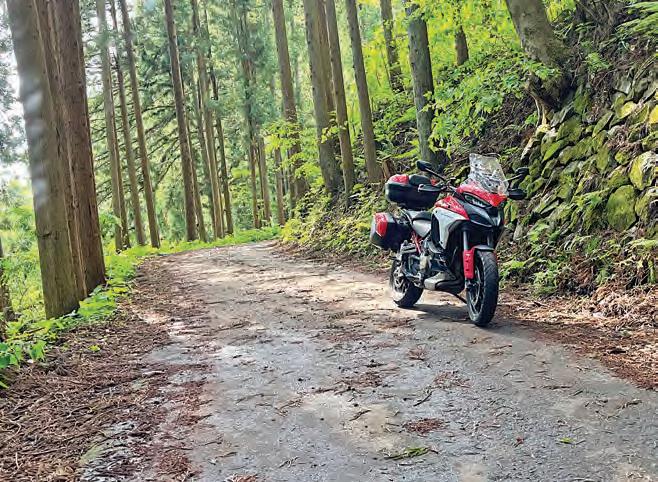
Although it is perhaps considered a heavier adventure bike, it’s not as intimidating as some others in the class due to its advanced ergonomics and features. The V4S also has an automatic lowering device that helps riders with shorter legs reach the ground more comfortably. Not an issue for me, but nice to know you have it.
Now here is what I really loved. The Ducati Multistrada V4S is equipped with the most advanced travel electronics I have ever seen, and all controlled by a very easy-to-use joy toggle on the left handlebar switchgear. Front and rear radar with adaptive cruise control and blind spot detection systems? I will be honest here and when I was told, by my Ducati friends, about how cool this was, I smiled and kinda tuned them out. Friends (John & Joe) you were right. This is very useful and cool. But as soon as we were in the chaotic Tokyo traffic, on the left side of the road, and the amber glow on the right-hand mirror warned me of the Subaru WRX STI about to rocket past I became a believer, and a twist of the cavallis quickly brought me close enough to give him thumbs up on choice of four-wheel weapon. On a more open road, I showed Shira how the bike

would automatically keep distance from the cars or bikes right ahead of us – just an amazing system.
But that’s not the really cool thing that had me smiling. Many bikes have riding modes, and they allow you to make your bike into the weapon of choice - but many can be difficult – the Multistrada TFT screen lets you, with a bit of schooling (thank you YouTube) easily dial in what sort of sword with which you wish to ride; a gladius, katana, or a claymore. Ducati offered several riding modes, each adjusting the bike’s performance for different riding conditions and styles. These modes adjust parameters like engine power, throttle response, and traction control settings. The bike had Sport, Touring, Urban, and Enduro. In addition, you could adjust how much power was at your throttle – with Sport being VERY responsive, and Touring far smoother. I spent a lunch stop setting this up to what would work best for us riding two-up, I also adjusted preload, damping with the electronically adjustable Ohlins’ suspension. This ten minutes of pre-ride planning allowed for a machine that had two humans, and luggage, firmly and confidentially planted on all but the roughest pavement, and for the power coming on like a soft stroke across the cheek from Sophia Lauren, and not a punch in the mouth from the Mario Brothers.
The riding in Japan was very fast and tight –particularly on well-paved mountain road lefts; that many times were decreasing and ever-tightening. I purposely stayed away from the centerline, as the danger here was clearly from my right – opposite of how my brain is trained (no political comments here, okay – we’re back in the USA).
After one long day I was not surprised to see how much I was digging into the sides of the Pirelli Scorpion tires with which this bike was shod.
Not once did this bike, a fairly new rental, ever bobble, change dance steps, or be petulant on this ride. A true Regina.
Let us talk power.
I am not a huge ‘Horsepower Guy’, although I do have a tee shirt that says otherwise. I still stand by my thought that HP is sometimes wasted. Note I am not saying always wasted. Not anymore. (sigh)
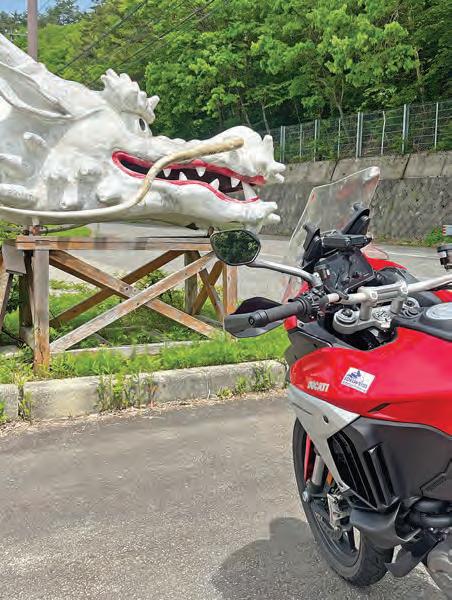

On this ride, we needed to make a Bonzai pass (it was Japan), and when the tachometer got to the far side, well things began to happen - really fast. Really fast. Shira was stunned, and I felt her grip me far tighter. I heard a “Holy Shit!”, come across the Cardo. Horsepower is like a drug or a fine guitar. You didn’t know that you would need it or fall into it. Till it does. It inveigles you. Entices and cajoles you into finding excuses to do that again, and again. (Thus, never taking your bike for a ride John, right) Remember those big rotors and Brembo brakes? We did. What a package. Who cared if she looked a little large on top?
So did Claudia Cardinale.
Add to this the sound and tone of the Ducati V4 engine and this bike can be quite the seductress. I know some of you are going to ask… No, I am not buying this bike. My German gal and her two tiny Japanese friends are paid for – but I always approach an article about a motorcycle, that I have spent significant time on, by answering the question – If I was told this was my bike for the rest of the season…what would I say?
Forza, tesoro… Kanpai! ,

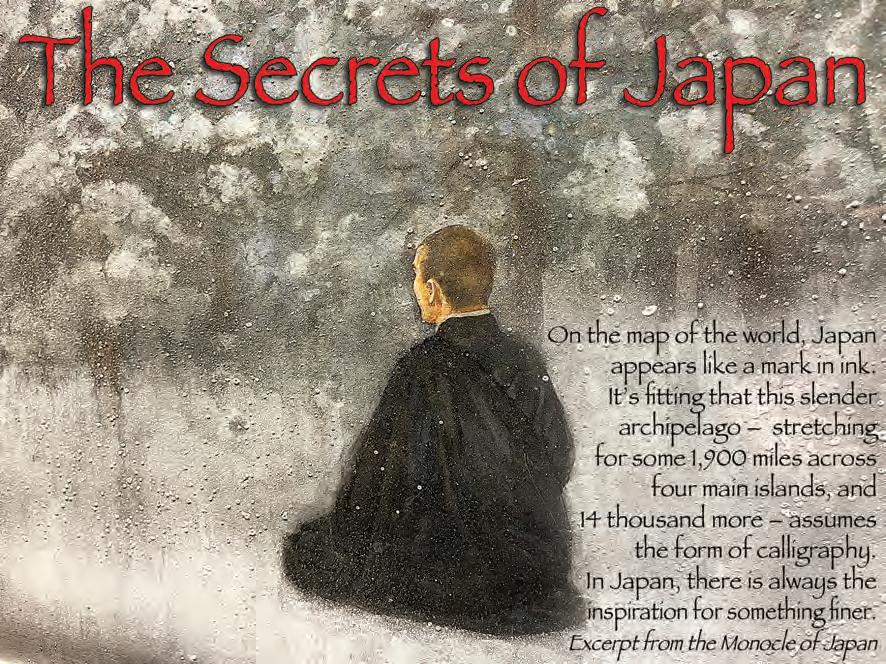
words: Brian Rathjen • images: Brian Rathjen, Shira Kamil, Edelweiss Group
The Land of the Rising Sun. It was named this as, from the east coast of Asia, it is where the sun comes up. The name Japan is an exonym derived from the Chinese pronunciation of Nihon, which started back in letters from the Chinese Sui dynasty some 1,500 years ago. For Europeans, this was an almost legendary land, and it was not until the 1500s that Giapan was mentioned, and it was the Portuguese missionaries that renamed it Japan for European traders. The book Shogun was based on all this, and the name has seemed to stick.
The world back then was enormous, and seems far smaller now – yet it was still a 14-hour non-stop flight from Newark to Tokyo. Non-Stop. One tank of gas. As a rider who has run out of fuel a few times, this concerned me – but the captain assured me that he, Boeing, and United had this. Hmmm. We settled in for the long flight, heading to Japan for a fourteen-day tour with Edelweiss Bike Travel’s Secret of Japan Tour which would cross the center of the island nation, through the Japanese Alps mixing both ancient and modern Japanese culture. This was going to be different for sure.
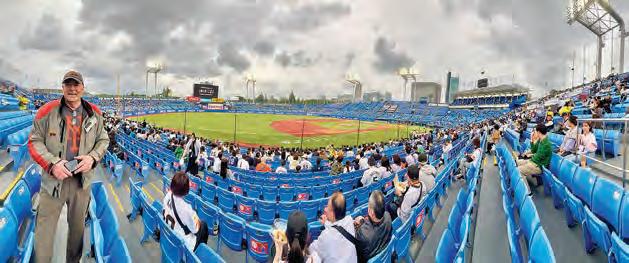
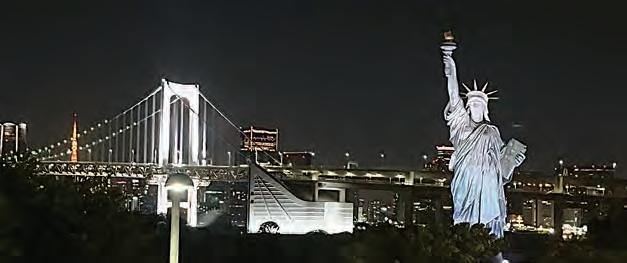
We arrived in midafternoon, and an entrance into Japan was quick and easy, with a short bus ride bringing us to the opulent Grand Nikko Hotel in Odaiba, a man-made island in Tokyo Bay created in the 1850s for defense of Tokyo. Specifically from the USA and Admiral Perry; and the U.S. Navy, who was looking to open up Japan from its 200 years of self-imposed isolation. There is deep history here kids, so go look for yourselves. Today Odaiba has a number of hotels and tourist sites, including a replica of the Statue of Liberty, a gift from Paris to Tokyo in 1998.
We are lovers of baseball, and not wanting to miss an opportunity for a game in Japan, we cabbed it into Tokyo proper for a crosstown rivalry game between the Swallows and the Giants being held at the oldest stadium in Tokyo, the Meiji Jingu Stadium, built 99 years ago.
Superb experience, and just a bit different from Citifield. Somewhere in the middle of the game the rain started to fall, which in Japan is not unusual. What was unusual was the lack of tarp or rain delay. Out came the ponchos, up went the Swallows little umbrellas, and the cheering continued.
The next day we went sightseeing around Odaiba and then had a mid-afternoon introduction with Edelweiss and to meet the rest of our group. We had three tour guides, Angela, who we have toured with in the past, Holger and James, an ex-pat Brit, who would be handling a passenger van, our luggage, and hotel logistics.
We had 13 riders on twelve machines, and Shira and I two-up. We had a mix of BMW, Yamaha, and Ducati and riding them were a mix of humans – two from Australia, four from Germany, and the balance from the United States. We were an international lot for sure. This time around we’d be piloting a Ducati Multistrada V4, a machine I had long wanted to ride. With fourteen days on the road, and the entire island of Honshu ahead of us, we knew this would be fun, enlightening, and full of history, and perhaps mystery.
Japan is an archipelago, or string of islands, on the eastern edge of Asia. There are four main islands – Hokkaido, Honshu, Shikoku, and Kyushu. There are nearly 14,000 smaller islands, too! Almost four- fifths of Japan is covered with mountains.
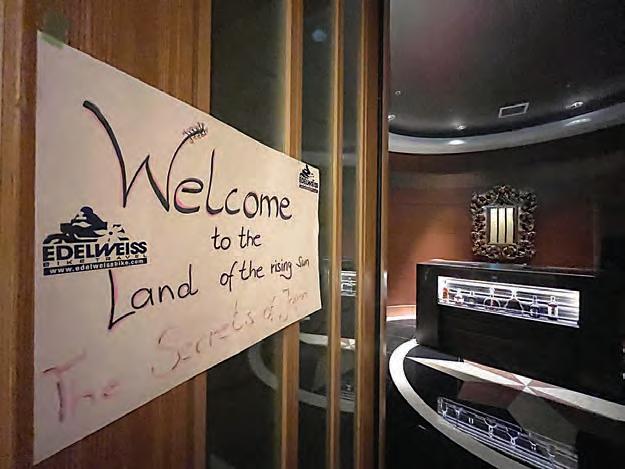
We have been to many cities, but Tokyo is special in many ways. But let’s talk size.
The city of Tokyo proper has a population of roughly 14 million people. When considering the greater Tokyo area, the population swells to around 41 million, making it the largest metropolitan area in the world. It is big, busy, and can be confusing to Americans, for sure. The elevated highway and tunnel systems are a design marvel, but can be a nightmare to negotiate; so we broke our group up into two smaller gaggles, each following a lead bike south from Tokyo, and along the coast. It was Sunday and, like Sundays everywhere, the local motorcycle riders were out in force. Running through a Tokyo Harbor tunnel we got passed by a number of Harley riders.
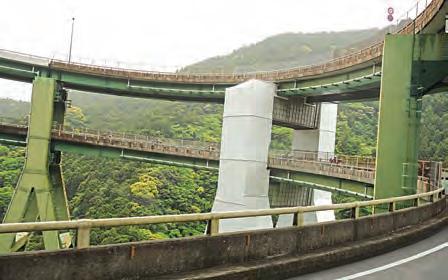
It was surreal, with the thunderous (and they were) American V-Twins, piloted by Japanese riders, pacing along with us for a bit, before heading off to wherever they were going this Sunday. We vectored south of Tokyo, with its huge industries and ports slowly thinning out as the scenery became more and more rural and beachy.
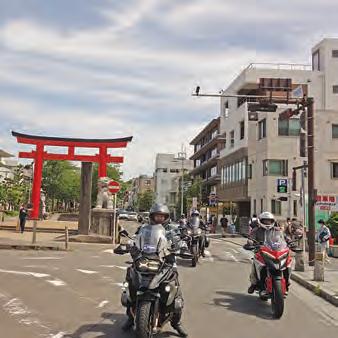
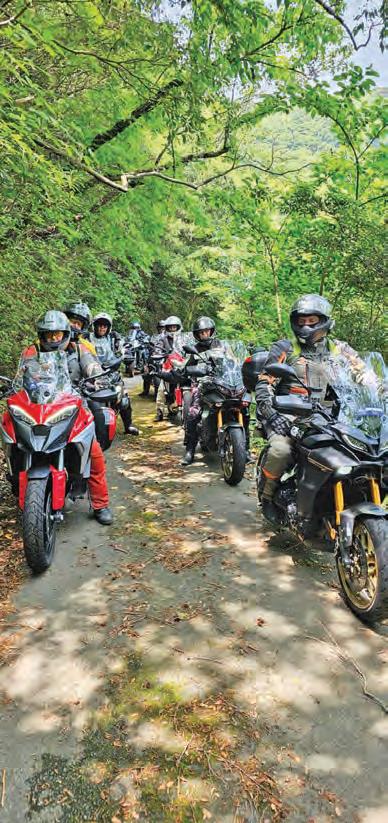
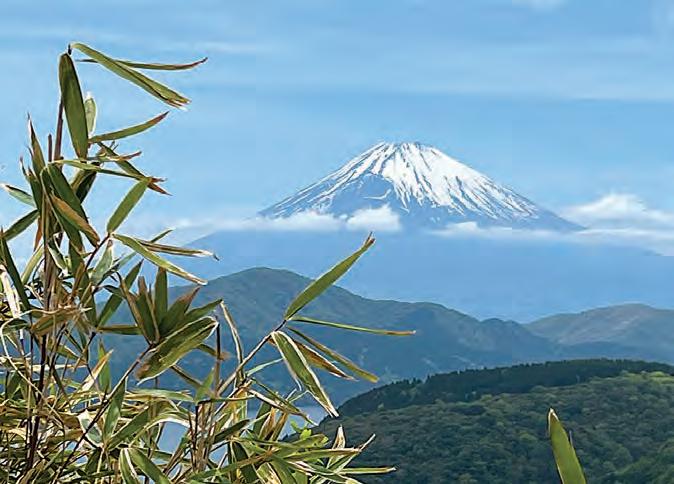
the dozens of other motorcycles that filled the parking lot, and taking off my helmet I looked up and over and… there it was - Mount Fuji. Holy F*@k! Fuji-San, as it is it is called by so many, is the picture-perfect volcano. It is 12,400 feet tall and is considered sacred. We could see why. With her snow-capped peak, she is stunning and would be part of our riding for the next few days.
This afternoon we came across dozens of Japanese riders busy doing that ‘On Any Sunday’ thing Japan-style, and some of the motorcycles were eye-catching, some historic, and some simply outrageous – one group of riders looking like they took their styling cues from Schwinn Stingray bicycles; a nod to the Bōsōzoku motorcycles of the 1950s. We stopped for coffee along the way, the small beach towns full on this sunny spring weekend, and then we turned inland, and towards the mountains that run down the spine of Japan. Japan has a number of ‘Skyways’ that are sprinkled around and atop these peaks. Our group motored up through deep forests of pines and bamboo, and then I heard Shira say “Oh, my. Holy S*@t!” The trees swallowed up my view, but when we got to the Daikanzan Observatory, I parked the Ducati in the middle of
We had lunch, and then spent the rest of the day riding atop the Japanese skyways - and down along the Izu Peninsula. The pavement, here in this region, was - well Japanese. Which is like saying Mary Poppins – practically perfect and all that. That would not be the case for this entire trip. Later that day we stopped at Mount Omuro - one of the oddest mountains we have ever seen. This extinct volcano is shaped like an inverted rice bowl (we were in Japan), and it is almost 2,000 feet high with a 1,000-foot crater –and all of it is as green as can be. We rode the chair lift to the top and strolled the summit, amazed at both Omuro, and the view from atop it, and sharing the summit with a Black Kite, a Japanese bird of prey, that fearlessly flew in and around the humans strolling the top of the ancient volcano.


A young woman walked by with a lemur on a leash. How cute. It bit me. Ahh, all the way to Japan, to climb an ancient volcano and die from the bite of a jacked-up monkey-squirrel. How nice.
Descending we rode into the seaside town of Kawasu, and a neat seaside hotel, that had the first of many Onsen – the hot springs for which the very volcanic Japan is famed.
Shira and I are okay with the Onsens – that are segregated with men and women having their baths. Japanese tradition holds with this always. Men here. Women there. No bathing suits. Best be comfortable in your own skin, and just let these naturally heated waters soak away the day’s miles. It would take a few days for most of this group to take a soak. We tried to hit them all.
We headed back the way we had come the previous day, along the Izu Skyline and then around Mount Fuji. We had lucked out the previous day, with a clear look at Fuji-san, but this day was a mix of wet and dry, sun and deep clouds, and many times we had little in the way of visibility, making our way softly along the curves and peaks. Edelweiss ran us along a number of very tight and heavily forested roads, that were really one lane wide, and the Japanese have even put mirrors at the apex of many hairpins, just to give all a fighting chance if folks are heading in both directions.
Rounding the tight and blind curves were much like the Pink Panther’s Inspector Clouseau, calling out and waiting for an inevitable attack from his manservant Cato.
The bamboo, called Sasa here, oak, and Japanese cedar, run close to the road, with deep streams and waterfalls running along the tight, and rougher pavement. I would glance at the beauty, and then get back to business, as this sort of motorcycle riding, especially in the wet, demands attention, and rounding each turn I would think… “Cato? Cato?”

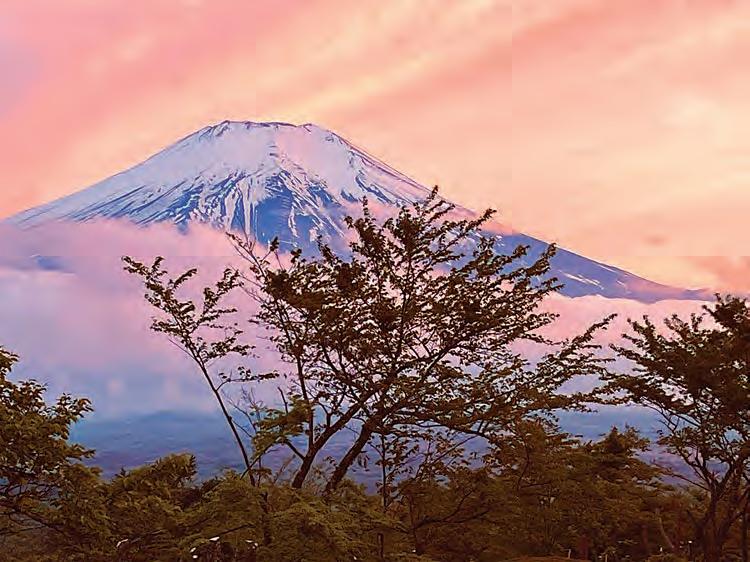

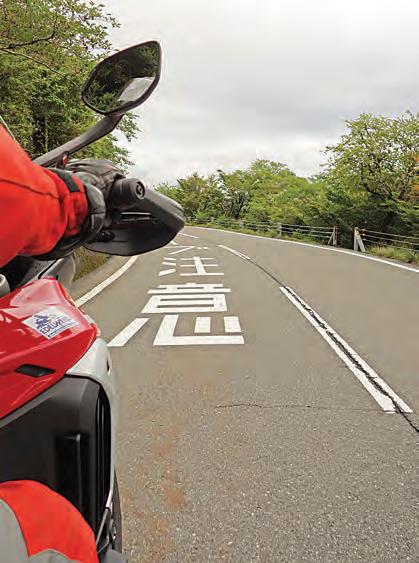
The bigger roads went high again, as we rode the Hakone and Ashioko Skylines – mostly made up of superb sweepers, and that nice Nippon pavement from the previous day. We rode through small mountain towns that looked like, in many ways, all mountain towns do. They could have been Europe, but were distinctly Japan. The old men walking together talking; the same hill they had walked and talked for years could have been in the European Alps –but they were in Japan.
The world can be so much alike, yet different at the same time. At day’s end we were still in the arms of Fuji-san, but she was hidden by the clouds, and we made for our hotel on the big lake below her.
Later that evening, as the sun almost finished its ride west, the purples and pinks came across the huge mountain. Fuji-san had been hiding, but as the sun set, the winds shifted and the clouds parted allowing the mighty mountain to make one last appearance this day. I knew she was there, but I did not really grasp how close we had ridden to her. Yesterday she was in the distance. This evening we were truly in her shadow. Fuji is titanic. A behemoth. When the clouds moved, she loomed like a monster above us. Like Godzilla. Stunningly majestic, yet clearly terrifying at the same time.
It was what we had come to Japan for. Unless the G-Man himself showed up, it would be hard to top this.
The number four is extremely unlucky. The number four (‘shi’) is widely avoided in Japan since it sounds too similar to the Japanese word for death. Keep an eye out in Japan and you’ll notice buildings don’t have a fourth floor, items are sold in sets of three or five, and special care is taken to avoid encountering the number in daily life.
Does Reed Richards know this?
The different regions of Japan are called Prefectures, run by local governments, and there are 47 of them. These local forms of government first began in the mid-1800s to replace the feudal shogunates that had divided the nation. We’d pass through many over the next few weeks. On this day we would ride further south and into Shizouka, ending in the port city of Hamamatsu.
But, before we would do that, we took some time to pay respects to Fuji-san, by riding the 18-mile Subaru Line Autoroad just below the snowline, what is called the 5th Stage, at 7,562 feet. Here, on the lower portion of the Subaru Line, there were still blossoming cherry trees, along with the other dense forest of oak and maple. The higher we rose the colder it got, and by the time we reached the 5th Stage, it was in the low 40s. We had a moment or two when Fuji showed her face but, even though it was a fine day, the clouds still surrounded us, and the mountains peak. That did not stop our sneak snowball attack.
Back below we motored along a mix of larger roads, and then along miles of green tea plantations, with tea being grown everywhere.
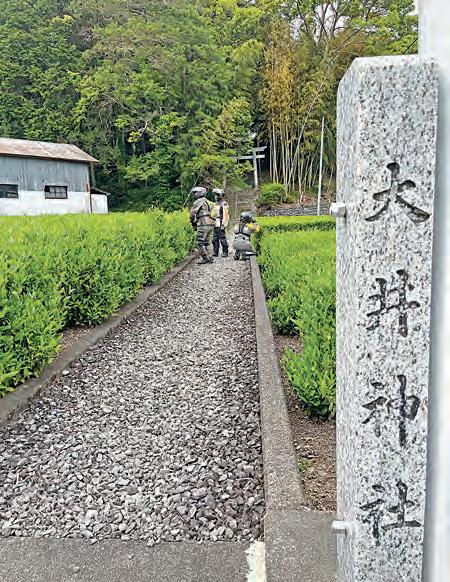


Along one of these roads we stopped for lunch at the most amazing stop, what might be considered a “Truck Stop,” in the US, here it was a mix of fuel, and shopping mall, with really wonderful and high-end wares and shops. There was even a Kushitani Shop. For those not knowing of Kushitani, they are one of the world’s top makers of leather racing and road suits and jackets on the planet.
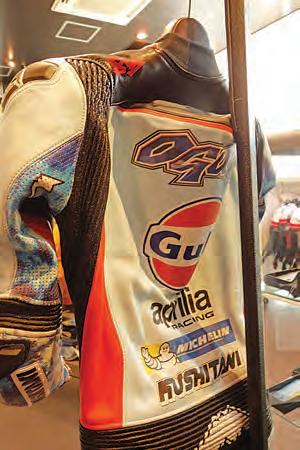
They had a small display of their history, as well as a set of Ai Ogura’s Gulf livery leathers from earlier in the MotoGP series this year. We could not help but grab an Ogura and Somkiat Chantra tee shirt.
Near Honkawane-Haruno we followed Angela up and over some of the local mountains, once again on Cato roads, that have been traveled for centuries, and were so tight two cars would not fit. More than once we had to make room to the left, as forest and service trucks were busy heading the other way on a Tuesday afternoon. Tight, still damp, and with a series of very, very tight one-lane hairpins they were roads to try one’s skills. Shira tried cheerfully to remind me that they were at least paved. Yep, there was that.
We stopped for coffee, and tea (of course), along the Oi River, a wide waterway, that for the most part was running at a fraction of what it can be during the snowmelt of early spring. Crossing
the river here was the Shiogo Suspension Bridge – a very narrow wooden and cable bridge built back in 1931 - and used daily by locals until the building of the nearby dam in the early 1960s. Today the bridge is mostly used by tourists and travelers looking to brave the nearly century-old swinging span. We rolled into Hamamatsu, and our hotel along Lake Hamma, by early evening, and after a soak in the Onsen, made it an early night as the next day was long, and started with a ferry ride from Cape Irago to Toba.
We had to break the group up and take two different ferries this day, and a few of us got going at 7:30 am, ranging down the coast of smaller roads and making time to Cape Irago, where we would pick up the Isewan Ferry to take the hour voyage across to Toba. The ferry was enjoyable and offered some superb views of the passing islands, and after docking we rode into the heart of the pearl and nori (seaweed) industry of Japan.
Tripping down along the coast, and to one of the piers along the curving bay, we parked the bikes and walked along the rocky shore, watching women spread out nori to try in the sun.
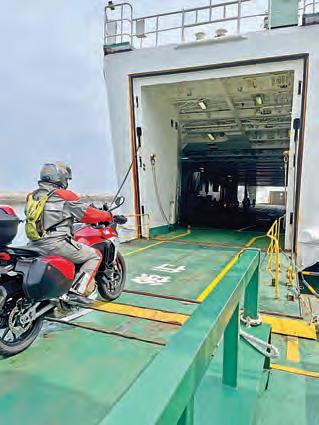
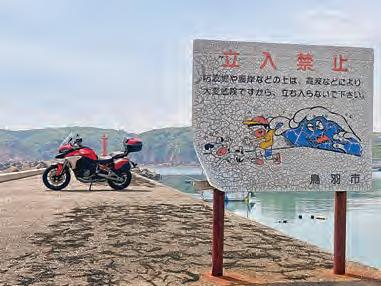
It was a beautiful and peaceful day. This was the region that was decimated by the tsunami that occurred back in March 2011. Almost 20,000 Japanese were killed, or never found, after this surge of water, 100 feet high,
ran more than 3 miles inland, devastating the region. Every block and corner had Tsunami Escape signs…. a clear and ever-present danger here in Japan. Angela had scouted this tour a few months back and she brought us back along some more of her tinier mountain forest roads. These roads, mostly one lane, with mirrors at the apexes, were a steady and concentrated ride, but easier than the previous day’s hairpins. Cato lite. In truth, we got to see

a hidden part of Japan that those, riding by on the bigger Pearl Road, would never have experienced. Thank you, Angela.
Later this day the mountains became more ridge than peak. Like a long line of sharp ‘Seneca Rock-style’ mountains, enshrouded in the perpetual green of the many trees that lay against the mountain like a living tapestry of different shades, hues, and shapes.
We had one of the best lunches this day, at a small roadside place, run by an elderly couple that have been serving up food for travelers for more than 50 years. Tiny and cramped – we sat at a small counter and were served the best sashimi in the region. Wherever you are, whatever nation you ride, it is tiny roadside restaurants like this that seem to make the journey that much more memorable.

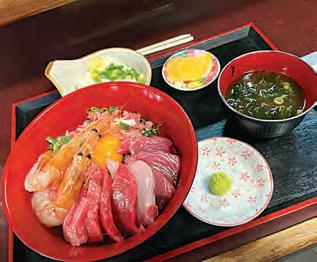
Late that afternoon we arrived at a superb inn that was very tied to the old Japanese ways. Tea, robes, private Onsen bath, and tub. Lovely in every way.
We started the day riding some nicely paved two-lane roads into the mountains, and then along more tight and forested semi-asphalt that would rise high above the valleys, along a sweeping run of forest, with the trees crowding onto the road like Ent-like centurions hovering guard over us. Truly remarkable, and unlike anything we had ridden through in a long time.





Back down on the roads where the mere mortals live, we vectored onto the Koya-Riujin Skyline, which had miles and miles of twisting sweepers that allowed for a marvelous riding rhythm, and groove. This road would lead us, like the thousands of pilgrims before, to Koya-san.
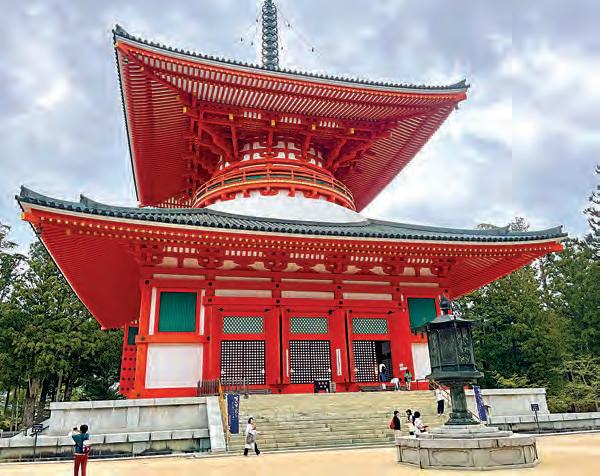
Located in the lush Koya-Ryujin Quasi-National Park, it is said that the eight peaks and the basin resemble a lotus, making it an auspicious location; and you will find more than 100 temples in this town. It is one of the most Holy Japanese Buddhist sites, and stunning to behold. We parked the Ducati and spent a few hours wandering around the temples, giving thanks and prayers, and lighting candles in honor of our mothers and family now gone.
It was a place of joy, with a tinge of sadness; much like life. Breathe in. Breathe out. Be one with the journey.
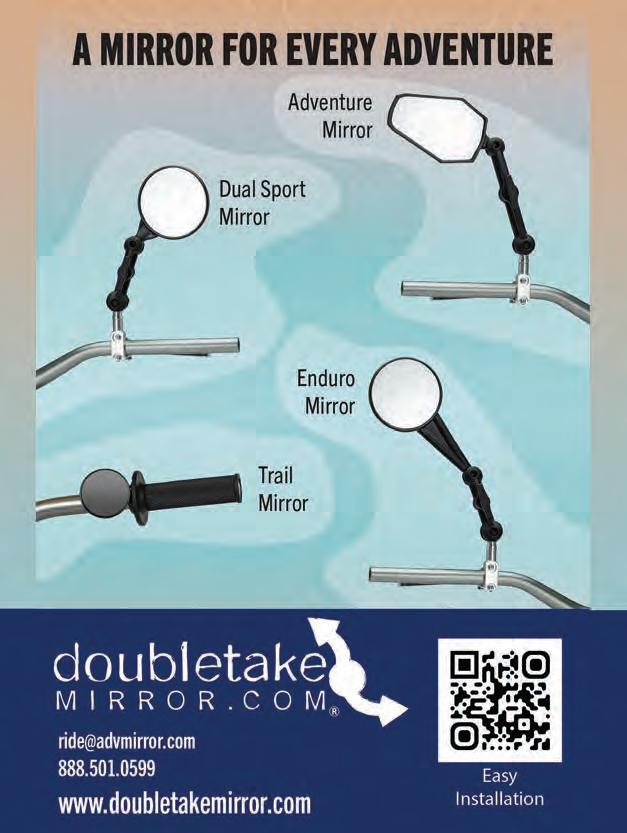
This tour of Japan was our 11th motorcycle adventure with the Austrian tour company, and they all were adventures – with more memories and miles than should fit into a life well ridden. From our first European ride in the Alps, to a smokey Montana, around the fiords of Norway, and running the Italian coast from Rome down to Mount Etna in Sicily, across Iceland and to a humble visit to Omaha Beach in Normandy, and other points on the globe, Edelweiss Bike Travel has provided a most excellent ride. From clean, modern and showroom condition machines - to hotel choices, routing, and other extras – they have come through on a consistent basis.
Celebrating its 45 year of motorcycle touring, the company now has destinations and tours in Europe, Africa, North and South America, Asia and the Pacific. Edelweiss offers Adventure Tours, along with their Classic, and Royal Tours. If you want to do self-guided, they can help you there too.

We can not speak highly enough about Edelweiss… they have been doing it for years and doing it right. Hmmm…. where to next? www.edelweissbike.com
We were heading to the city of Kyoto, once the capital of Japan. But, before the big highway, and the battle with city congestion and traffic, we had about 40 miles of the rest of the Skyline to conquer like two-wheeled samurai, and it made for some spirited riding that afternoon. We’d spend two nights here in Kyoto, and it would be a chance to park the bikes and explore this old Japanese city on foot.

Long considered the cultural center of Japan, Kyoto was once the capital before it was moved to Tokyo in 1869. During World War II the city was generally spared from Allied bombing and was taken off the list of targets for the atomic bomb by the Secretary of War Henry Stimson. He argued for Kyoto’s removal from the target list due to its historical and cultural significance as the ancient capital of Japan. Stimson’s efforts, despite some opposition within the military, ultimately led to President Truman agreeing to spare the city.
Thus spared, this city has retained and cherishes its ancient buildings and temples. Though a modern city, Kyoto’s past still can be seen and felt.

We left the Ducati parked for the day and cabbed it to the Kodai-Ji temple in the historic Gion District, a magnificent complex of structures, built by noblewoman Kita-no-Mandokoro in memory of her late husband, Toyotomi Hideyoshi – the Shogun and Unifier of Japan. The buildings, and the grounds, especially the bamboo forest, were sublime, and a treasure to walk through, and to stop to have tea.
This city was spared from the horror that Hiroshima and Nagasaki endured, yet the people of Kyoto have a place, that I think might be as sacred as the temples that surround the city. Ryozen-Kwan-On. The giant Buddha.
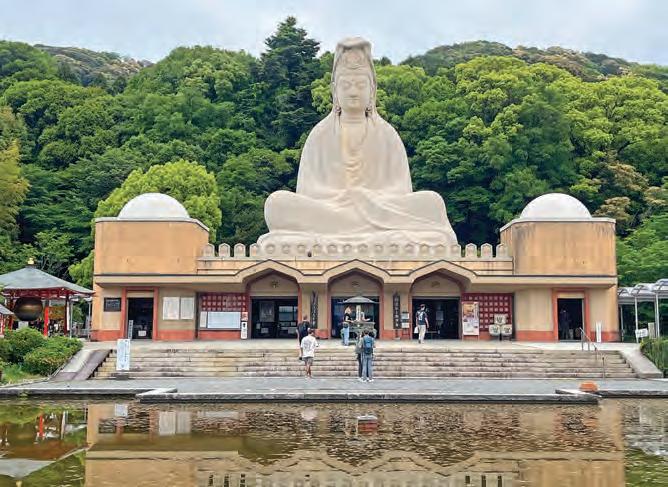
This huge white temple stands as a striking testament to peace and remembrance. Established in 1955, it serves as a solemn memorial to those who lost their lives during the Pacific War. With its towering 24-meter concrete statue of Kannon, the Goddess of Mercy, overlooking the grounds, Ryozen Kannon offers visitors a profound space for reflection and contemplation. We walked the Buddha, lit incense, and offered prayers, but then we found something unexpected – almost chilling.
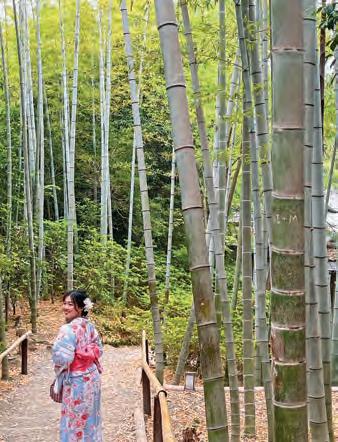


To the right was a smaller temple – a place of prayer for the World’s Unknown Soldiers, and all who have died for their country.
We all want peace.
A prayer and wish was easy, then my eye caught a side room, off the small temple. Along one wall were ten filing cabinets atop each other. On the top of the cabinets were signs, in black and white… “Individual Names of Allied Personal who Perished in a territory under Japanese Jurisdiction during World War II” USA, Australia, England, France, Canada, and others…
Across from the cabinets were shelves holding soil or sand from military cemeteries from all over the world. My hand went to touch the glass urn that held soil from Arlington, and we knelt and offered a second prayer. It was nearing lunch so we took another cab to the Nishiki Market, called Kyoto’s Kitchen. Narrow and fully five blocks long, this market is packed with seafood and meat markets, offering some things we have never seen before. There are restaurants along Nishiki, and the Kobe beef, with noodles and egg, along with the fresh tuna and homemade soda were enjoyed in a crowded side restaurant that offered a true local feel to the meal.
After lunch we walked the larger stores, picking out a Kimono for Shira, and then dropped in on a very weird Japanese thing called Mi Pig Café. Ever sit down with a beverage and some pigs… we bet you have, but maybe not these cute micro piglets, who really just wanted a lap to crawl into and snuggle for a short nap. It was different – that is for sure.

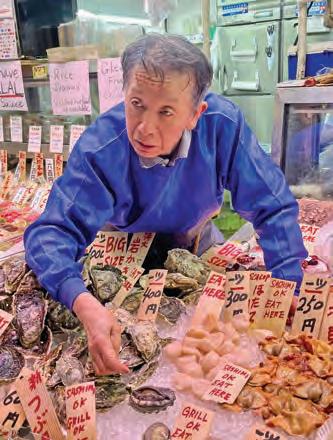
So far, more or less, we had little moisture. Japan made up for that this morning with a strong steady rain soaking us as we navigated the Saturday morning traffic out of Kyoto and then made our way west towards Himeji. If the sun was shining, we might have attacked some more Cato roads, but the steady rain kept us on larger two-lane roads, that tunneled through the mountains, rather than twist themselves over it. Japan does love its tunnels and has more per mile than anywhere else on the planet, and we’d ride through hundreds on this trip.
We arrived in Himeji by late lunch and fought traffic that was even worse than Kyoto’s. Japan is a mix of old and new, and the new has traffic. We dealt with it.
“We’ll also need a company of first-rate men. Do you have any Commandos here?” - James Bond “I have much, much better. Ninjas. Top-secret Bond-san. This is my Ninja Training School” - Tiger Tanak
This is a classic Bond scene from ‘You Only Live Twice’; but unlike so many elaborate and created Bond sets, this location, Himeji Castle, was as real as it gets.
We parked at our hotel and then Shira and I began to walk over to the famed Castle – the only true and remaining wooden castle in Japan. It started as a fortified hilltop, in the 1300s, and over decades and rulers expanded, and grew more and more grand. Now it is a UNESCO Heritage Site and can be seen for miles.

On our way to the castle, we stopped for Thai food in a small alleyway restaurant, for crab & curry, and some cold Leo lager and we watched an ongoing parade of local children and dancing groups that took over the historic section of Himeji. It was the Himeji Oshiro Matsuri… the Himeji Castle Festival. Held over three days, this historic celebration blends Edo-period reenactments, traditional performing arts and lively community spirit. First held in 1948 as a symbol of postwar recovery, the festival celebrates the cultural legacy of Himeji Castle.
The rainy morning had given way to a sunny Saturday afternoon, and the town was immersed in the local culture. People were cheering, children laughing… all was very good in Himeji.
The castle was outstanding, and we walked every step of the five-story castle, marveling at the construction, and details that went into this building. We stopped and sat on the lawn… imagining Tiger Tanaka’s Ninja School training on the wide lawn.
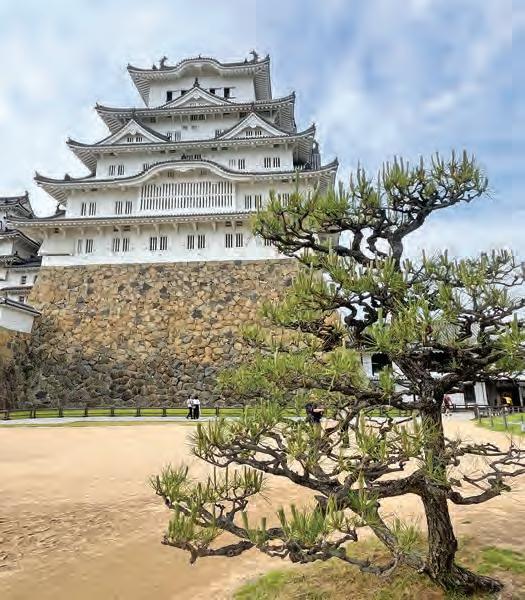
Getting out of Himeji, on a Sunday morning, was far easier than getting in the previous day; and being another Sunday in Japan, the backroads were sprinkled with riders. Not the Bōsōzoku of Japan’s past; just riders like us getting out on a beautiful day. For us, the road would take us to the west, and all the way to the Sea of Japan, then north along Mikatagoko and Rainbow Lines; stunning limited access highways that were a blast to ride and gave an elevated and wondrous view of the western coast. Mikatago means “The Five Lakes of Mikata,” and these lakes are a mix of sea and freshwater that give these mountain waters a most interesting hue. The Rainbow


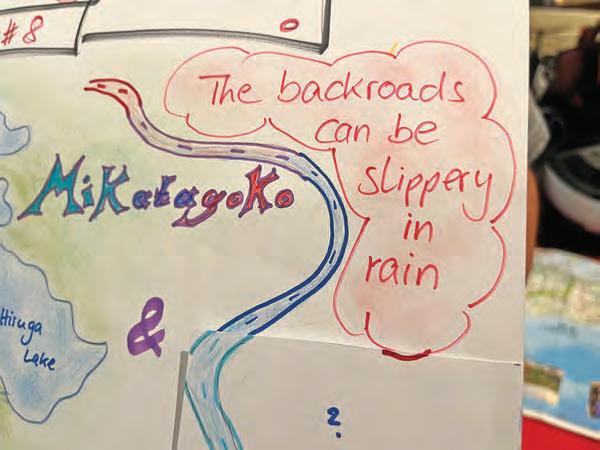

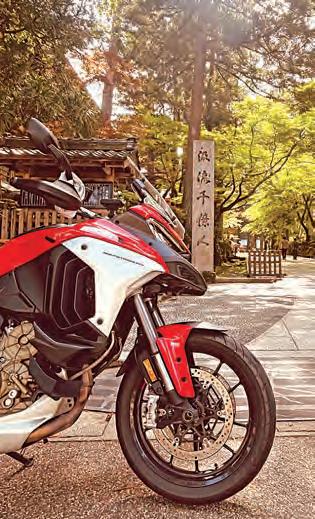
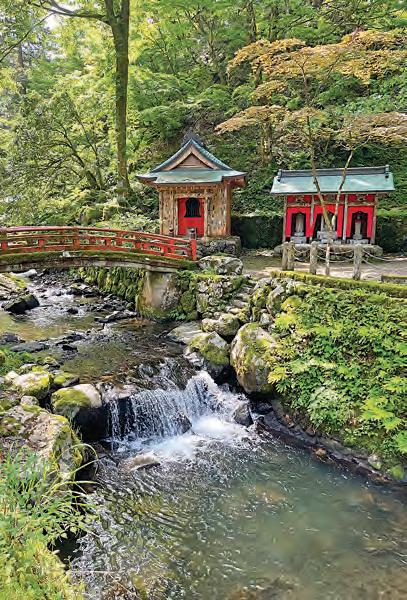
Line Summit Park, atop Mount Bojo, was a great stop, even if the pesky clouds kept us from ascending higher on the chair lift.
Our afternoon ride brought us back into the mountains and to the town of Eiheiji, home of the Temple of Eternal Peace, created in 1244 by Zen Master Dōgen. Eiheiji is not just a tourist spot. Since 1244 and up to this very day, its halls have been filled with the sincere atmosphere of Zen practitioners unceasingly carrying out the Buddha’s teachings as they were transmitted by Zen Master Dōgen. Our hotel, Hakujukan, was not far from the temple and was a most remarkable inn, with a true Zen-like feel, a marvelous multicourse meal (vegetarian, of course), and a well-kept Onsen. That night the running waters, and quiet calls of the birds and creatures, made for a most refreshing sleep.
Who knew our prettier publisher was part Ninja Turtle, and that she’d have an entire ancient Japanese Mountain Village named for her?
But before we got there, we had an early morning walk to the Eiheiji Temple Complex. Peaceful and visually stunning in that soft Japanese way, it truly was a Temple of Peace. Some of our group rose pre-dawn to accompany the practitioners to the Temple for their morning prayers and perhaps enhance and expand their feeling of Zen.
The road that day continued north, and through another dozen or so tunnels, some short, others kilometers long. This northwestern part of Honshu was so pretty, and very different, with some of the peaks still wearing a
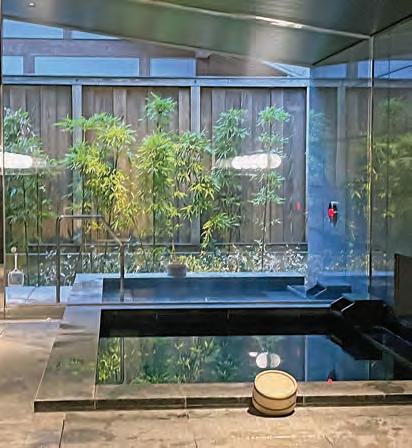
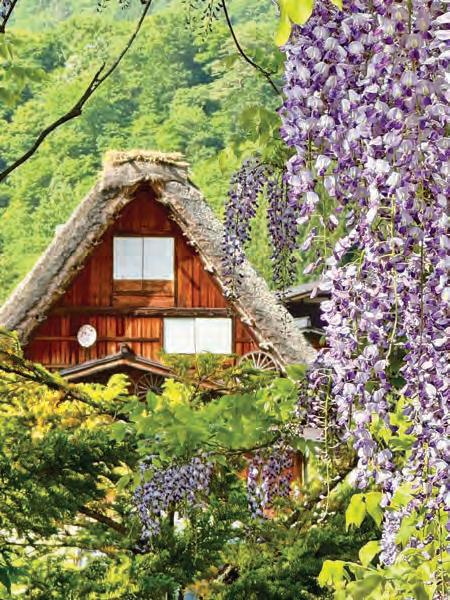
shroud of snow, even in mid-May. We rode along more forest Cato roads, mimicking the shorelines of the many lakes, and lightly around the mountains with a sweepy and easy manner of ride.
Shirakawa-Go is an ancient town that lies along a valley in the Shogawa River Valley – with its mighty flow and deep green waters running from the melting snowpack high above. The town is filled with traditional gassho-zukuri farmhouses, constructed like “Hands in Prayer,” with deep, very thick, and strongly pitched thatched roofs. It snows heavily in this part of Japan and there are signs throughout the village to beware of falling snow tumbling off the roofs. These roofs cover enormous multi-level attics, that were used for centuries in the cultivating of silkworms.
Shira loves her town, bought a shirt and a sticker for a keepsake, and soon we were back on the Ducati and the backroads of northwest Honshu, arriving at our hotel just in time for dinner.
We had a rather short ride this day, but it was big mountain-wise, with the peaks of Hida, the northern Japanese Alps, seemingly getting tighter and more and more snow-covered at higher elevations, well over 9,000 feet tall. Only Fuji-san is taller. The two-lane roads slithered like a long and angered Japanese dragon, along hard-flowing rivers, through many more tunnels, and across steel bridges.
Dragons did actually live in this part of Japan, as the Fukui region has unearthed more dinosaur remains than any other part of Japan – making it
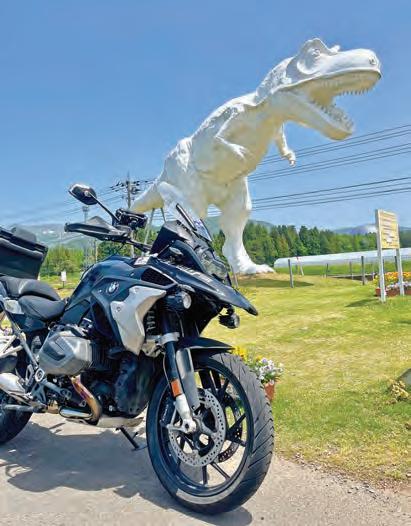
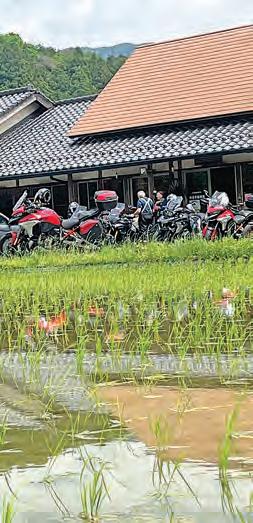



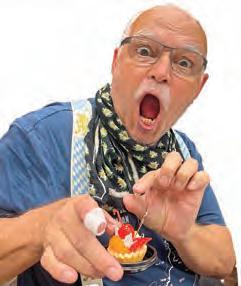
the Japanese Dino epicenter. Along the road, there are dozens of dinosaurs, and it seems every business wants one of their own, and the local dinosaur museum is one of the best on the planet.
We stopped to visit Gujo-Hachiman, that had become famed for a rather odd profession. Throughout Japan you will see enticing and very real-looking plastic food replicas, and they look good enough to eat. This skill started as a joke between a husband and wife, but it has now become legendary in Nippon.
We spent some time at one of the shops, and these replica food items – sushi, ice cream, crab - were stunning. They had a small multi-room museum full of Japanicana (their version of Americana), with a look at modern culture, say from the post-war on. They had Astro Boy, and hundreds of pieces of memorabilia… including a Mach 5.
It was all very cool.
Our preplanned route got snafu’d, and we took a Plan B, which would eventually bring us up the mountains, on very tight pavement (made a bit tighter in my mind by the riding on the left) and towards the Chubusangaku National Park and Miyamaouan, a very nice hotel done in Japanese -style with an Onsen fed by Mount Yake – an active volcano.
This would be our stop for two night, and a special one, as Shira and I were married on this date 35 years back… Kekkon kinenbi omedetō.




Some took off for a full day’s ride, and I rode out solo, with Holger and Stuart, one of the Aussies, for a spirited ride around the mountains and valleys, bagging a few passes, and a tank full of fuel on Cato roads, which seemed even more unpredictable this day, with Macaque monkeys dodging through the bikes, or minivans full of Chinese tourists appearing in the middle of the turn, like Cato popping out of a refrigerator on Clouseau. The last thing I wanted was to hear… “Why, that was a pristine Ducati… Not anymore.” I got back in time for a late lunch with Shira (who had ditched me for Clive and Dirk), and a laid back rest of the afternoon with a book and a massage.
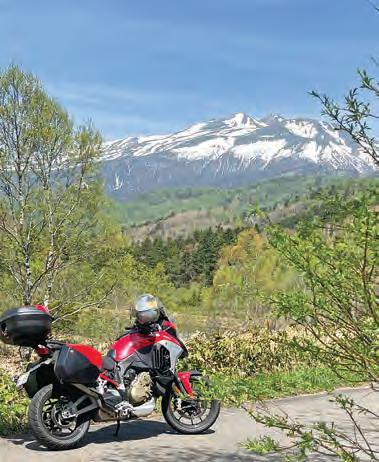

Toilets - ‘Toto, I have a feeling we’re not in Kansas anymore.’ The only other time we have mentioned toilets was when it was bad, very bad. But, in Japan, it is very, very good! Almost all, even at fuel stations, have bidet and are impeccably spotless. Do your business, and walk away refreshed.
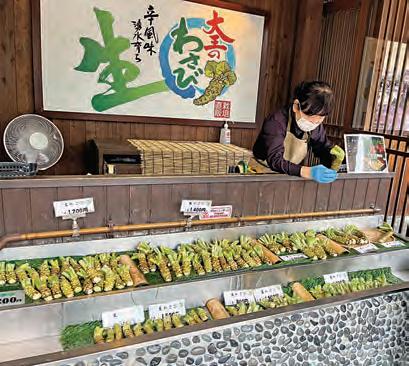
gerous green paste that can give Japanese food a powerful kick. Within the farm stands the Daio Shrine, which enshrines the spirit of an ancient local hero, Hachimen Daio, after which the farm has been named and who is considered the farm’s protector. Nearby the shrine is also a small cave related to the local hero’s legend. They had wasabi ice cream. How could Shira resist?

We had to reverse our way out of the mountains this day, and fought a bit of touristy bus traffic that reminded me of Italy, with two big buses taking up room for just one. We were patient and eventually got into the sweep-
ers that were sprinkled through these mountains. We headed north and then into a wide valley, and the fairly rural Azumino City, near Matsumoto, that is home to Daio, one of Japan’s largest wasabi farms. If you have ever eaten sushi, then you are aware of wasabi, the potent and sometimes dan-

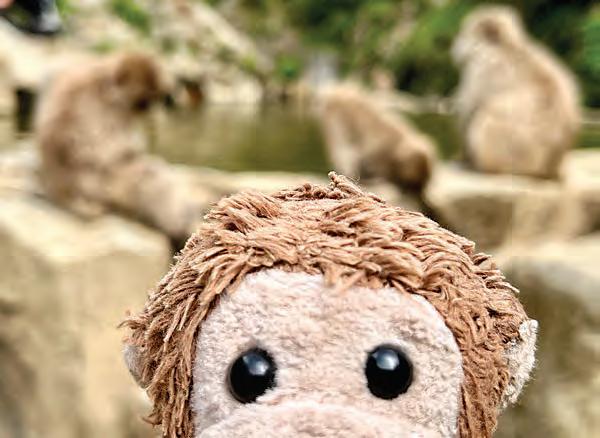

This day would also be a special one for Shira’s pal Pepe, as we rode up the mountain, and through a very dense road, packed tight with the surrounding forest, half of which seemingly was on the bombed-out pavement. It was magical.
Atop the mountain, we parked and walked up to the hot springs that are home to Japan’s famed Snow Monkeys at Jigokudani Park.
You could see why Pepe was pumped.
The Japanese macaque, also known as the snow monkey, is a primate species that is native only to Japan. Colloquially, they are referred to as “snow monkeys” because some live in areas where snow covers the ground for months each year – no other non-human primate lives farther north, nor in a colder climate. The setting was stupendous and the macaques were everywhere, and basically in control of the hot springs that were simply bubbling from the ground, and nearly 150 degrees and more.
Pepe and Happy got a few images with them (Careful not to get too close – we didn’t need another Marabou
stork incident), and it was truly extraordinary to see how these monkeys interacted, especially the mothers with tiny balls of fur with faces clinging to them.
They will get very close and seem to have no fear, but you would have to be nuts to be nothing but respectful to these creatures.
Everybody loved the snow monkeys, but we had miles to cover and were going to ride over Mount Norikura, at 8,865 feet, the highest roadway in Japan. The locals called it the Echo Line, I call it fantastic. Truly amazing, and breathtaking, as we rode higher and higher, tree lines fading to be replaced by snow that was still many feet deep, even in late May. It was a spirited ride, and we stopped at the summit for a photo op, and then headed down, in that same sporty fashion.

This road was another dragon, and the far side of Norikura smelled like it too, as this is an active volcano, with the air of sulfur wafting through the helmets, the waterfalls were throwing steam, yet snow was still dominating the top that was shrouded in a deep fog that ran along the cliffs and through the bikes. Then we rode the far side which had exploded years back, and now seemed like the road through Hades. It was unexpected and almost supernatural.


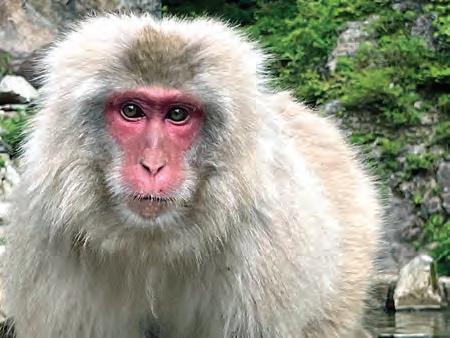
It was one of those riding days you were glad to get in, yet sad that it had ended, as we arrived at a very neat, modern and motorcycle-friendly hotel by evening. It was surely the best day’s ride, of a trip full of great days of riding.
The only thing that added a cream topping and a cherry was karaoke that night. This is as Jap-



anese as it gets and we nailed Zeppelin’s Whole Lotta Love, Aerosmith’s Sweet Emotion, and Prince’s Let’s Go Crazy
The next day we really began to head east and back towards Tokyo, and so the next two days were going to be important… as the end of this wild tour was heading our way, and it is rare that you get such a great crew of riders from around the globe that seem to fit well, enjoy each others company; even after two weeks, and - really important –reveled in the ride.
Bullet Trains: We spotted the famed Japanese Bullet Train a few times during this trip, the last as it flashed by as we rode under the trestle. They are almost as fast as, well, a bullet.
Before leaving the region we took a quick ride around the town of Kusatsu’s center, viewing the Yubatake, which emits a constant flow of steaming hot, mineral-rich water that is the source of the town’s fame Onsens. This near-boiling water is so hot that it traditionally was stirred by the town’s women, with a wooden paddle, to cool it without diluting its mineral content. The method, called yumomi, is a rhythmic performance, accompanied by traditional folk songs. Today, the center of town has a series of wooden baffles that do the job, but the tradition remains many times each day.
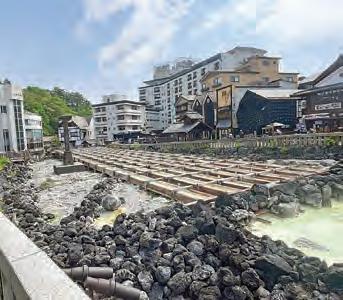
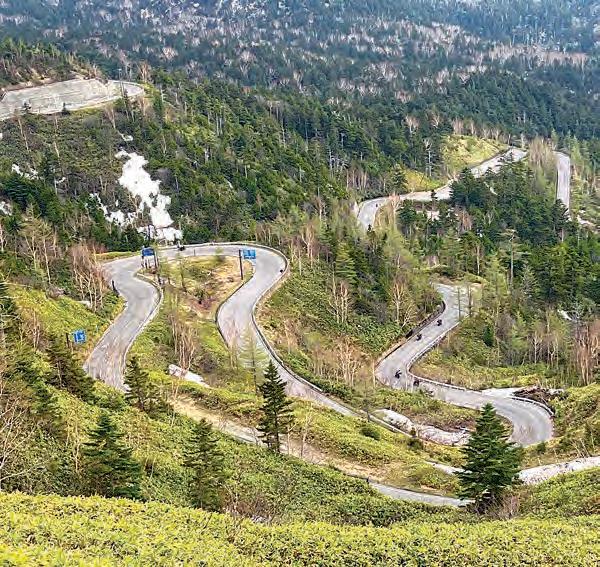
This entire region was sitting on some serious volcanoes, and the tang of brimstone greeted us for miles.
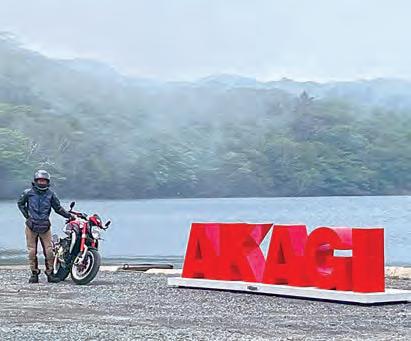
other lake, and so on. One long day of twists and turns.
By mid-afternoon, we arrived in Nikko, after running down the last mountain that had 48 hairpins leading to the small city. I began to call it Japandelstelvio.
Nikko is a testament to one of the most important figures in Ja-
We stopped for coffee at Lake Haranu, sitting at nearly 4,000 feet in the caldera of one of the sleeping giants.
The roads, like the day before, were a constant series of sweepers, some long, but most tight and unforgiving. We’d pick our tight left lane line and stick to it. One giant mountain road led to an-

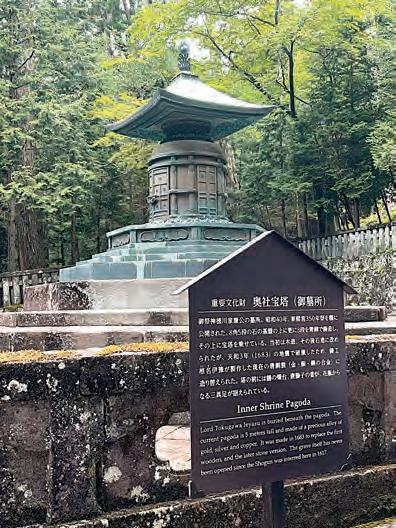
pan’s history. Tokugawa Ieyasu (ruling from 1603 to 1605) was the first Shogun of the Tokugawa Shogunate and is credited with bringing 300 years of peace and stability to the country after a long period of regional conflict. We walked 207 steps to his tomb, and to pay our respects to this mighty Shogun. Another odd find in this temple was the famed Three Wise Monkeys. The proverb “hear no evil, see no
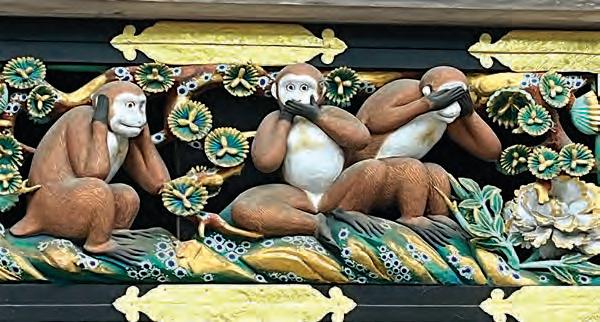
evil, speak no evil” originated in Japan during the 17th century. It’s a Japanese proverb that became popularized as a pictorial Shinto maxim. The Three Wise Monkeys are part of a carving at the Tōshō-gū Shrine here in Nikko. We had seen many temples and shrines in Japan so far, but this was very, very special, and a great way to remember Japan.
Honda was Inspired by the Temples: The Dream C70 was the first motorcycle to fully embody the appeal of Honda’s creativity in everything from the engine to the styling. The unique style, called the “Buddhist temple” style, came into being under Soichiro Honda’s personal direction after he was inspired by the temples of Kyoto.


We had been to so many temples, but today there was one more…
The Temple of Speed at Motegi.
The Mobility Resort Motegi was conceived by Honda as a facility to promote motorsports in Japan and to serve as a testing ground for their vehicles. Its original name “Twin Ring” comes from its unique design, featuring two separate tracks: a 1.549-mile oval track and a 2.983-mile road course. This dual configuration made it one of the few circuits in the world to have both an oval and a road course.
It became the home of the Indy Japan 300, an event in the IndyCar Series that brought American-style open-wheel racing to Japan. The road course also hosted a variety of international and domestic events, including MotoGP, the premier class of motorcycle racing since 1999. That day there were some local sport cars racing, and the feel and vibe was far more Speed Racer than Days of Thunder; especially with the VERY exuberant young female announcer.


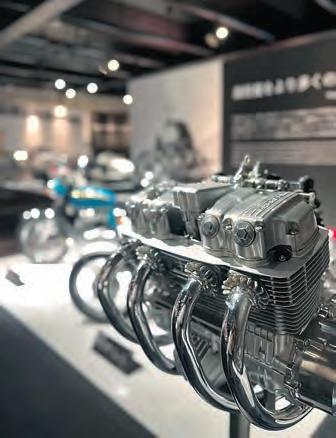
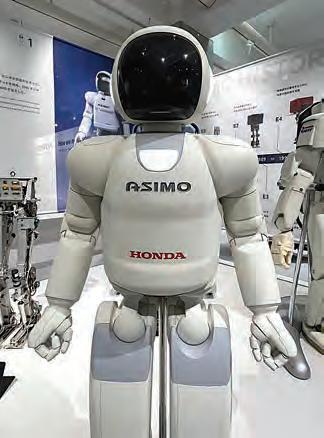
Tagging another MotoGP Track was great, but we had really come to see the Honda Collection Hall that can be found here.
This wonderfully kept building houses some of the most important machines from Honda’s illustrious and successful history.
From Soichiro Honda’s earliest engine-powered bicycles, to their F1 and MotoGP machines, Honda’s automotive dynasty to the Honda jet and ASIMO, Honda’s famous robot – the Honda Collection Hall is a ‘bucket list’ stop for all who have watched and been enthralled by the brand for the last half a century. It was truly amazing.
Not all that surprisingly, Edelweiss brought us from Motegi to the main road into Tokyo on one last Cato road (really?), but then we had a couple hours heading towards one of the busiest metropolitan areas on the planet.

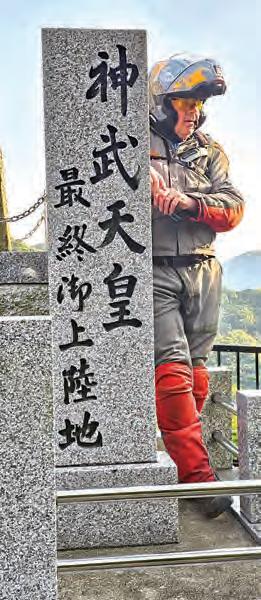
As Tokyo came into view I was truly stunned by its immensity. Tokyo is friggin huge, and it took a bit of doing to head back to Odaiba and the hotel we had started from two weeks earlier. That evening Tokyo had a giant firework show, probably given in our honor, and we had a last farewell Japanese dinner. The next day would see flights spreading out across the globe bringing our groups back to their homes – certainly with stories to tell and memories to cherish.
Bodhisattva, would you take me by the hand? Can you show me the shine of your Japan Can you show me, Bodhisattva?
~ Steely Dan
I had some reservations before leaving on this long trip halfway around the planet, but would not trade our Japanese journey and memories for the other half of the world. Edelweiss Bike Travel ran a really superb tour, especially considering the logistics, the riders from around the planet, and a culture so far different than the West.



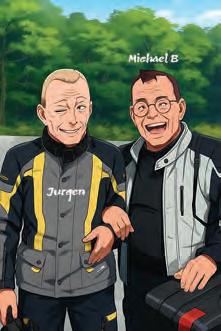
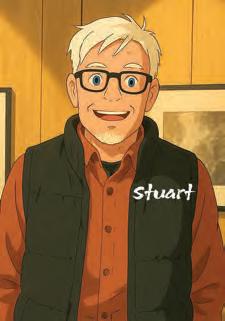



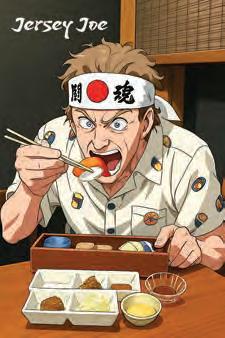
We found Japan to be an amazing country, with a look, feel, and attitude so familiar, yet so different than here in the United States. I dare say we could borrow some of their ways, and perhaps become a more polite and caring society. I really want their toilets.
The riding was awesome, the roads fantastic (even the Cato Roads), and the Japanese people were so gracious to us.
Like the Vapors – I feel I’m turning Japanese, I really think so. Kanpai

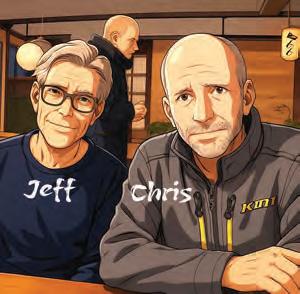
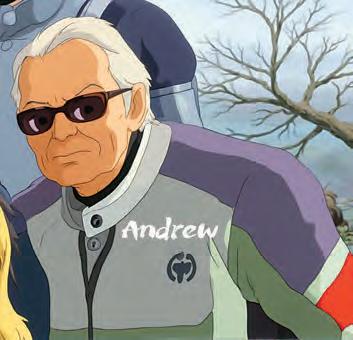
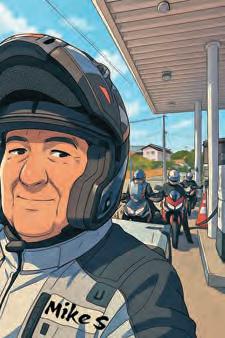
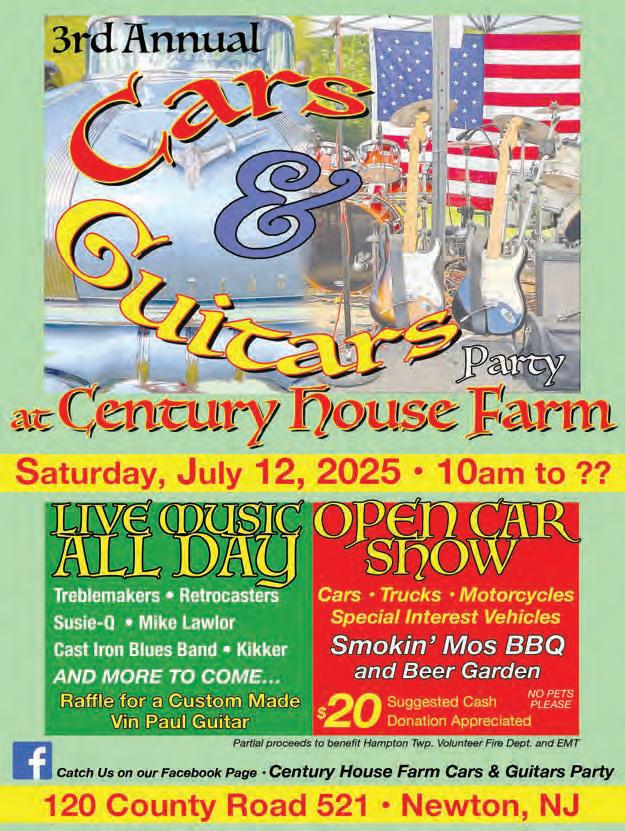
I was in need of a new tank bag for our KLR650R, and I had a few boxes that needed to be checked before investing in a bag that would, probably, be on this machine for the rest of its life.
Being a KLR that will be at least another century or two. It was easy to zero in on Rigg Gear’s Hurricane Series of Adventure Luggage. We have featured a few of these offerings over the last few seasons and their Hurricane Adventure Waterproof Tank Bag looked like the way to go. It was plenty big for day-to-day use holding a full 8-liters, without gobbling up the entire surface of the Kawasaki; measuring just 14”L x 7.5”W x 9.5”H.
The Hurricane Bag is seriously tough, and very well made from heavy-duty UV-treated PVC Tarpaulin material, with all the seams elec tronically heat welded. Inside it uses an adjustable divider to help keep your tank bag gear in order, and a clear touch-friendly screen for smart phone directions or maps. Getting in and out of this bag is very simple, and quick.
One thought with my previous bag was that it needed a rain cover for the wet. That really was not a deal breaker, but the Hurricane Adventure Waterproof Tank Bag is really, totally water-proof, and this tank bag closes with a waterproof flap that helps keep dust & dirt away
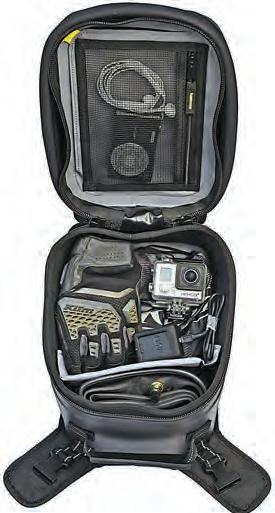


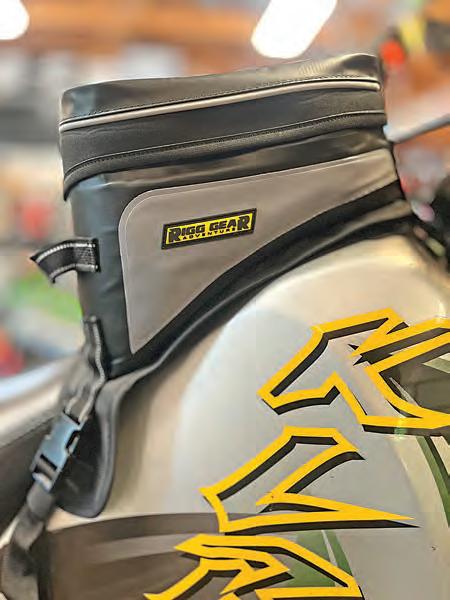
from the waterproof zippers. That is four ‘waterproofs’ in one sentence.
Your stuff will stay dry, without any effort or worry on your part.
The Hurricane Adventure Waterproof Tank Bag is kept securely in place by four tidy quick-release straps and utilizes a protective base material that both keeps the bag from sliding around and protects the tank’s paint. Off the bike, a handy and rubberized carry handle makes for easy transport.
The Hurricane Adventure Waterproof Tank Bag comes with a lifetime warranty, and it lists for $164.95 from nelsonrigg.com.


Before there was Overland Expo, before Touratech rallies, or advrider. com, or most off-road training opportunities, there was Horizons Unlimited (HU). Started by Grant and Susan Johnson, a Canadian couple who spent eleven years riding all over the world on their trusty BMW R80G/S, HU began as an attempt to share their experiences with friends and others in the then-small community of overlanders.
This communication of the joys and challenges of international motorcycle travel soon begat get-togethers the Johnsons dubbed “Travellers Meetings,” using the British spelling. First held as a modest backyard affair in the UK, these meetings quickly expanded to weekend events held all over the world.
For 25 years now, overlanding enthusiasts have met up with like-minded travelers to get information and inspiration for their own planned journeys. In 2025, scheduled meetings have been or will be held in the U.S., Canada, Australia, Germany, Austria, France, Ecuador, and several other countries.
If you go to a Travellers Meeting, will there be anyone you can ask about a particular destination?
Alaska? Of course! Mexico? Si!
Ushuaia? Indeed!
Round the world? Pick from several people who have ridden the ultimate! It’s a safe bet you’ll meet a range of riders from those relatively new to two-wheel travel to those

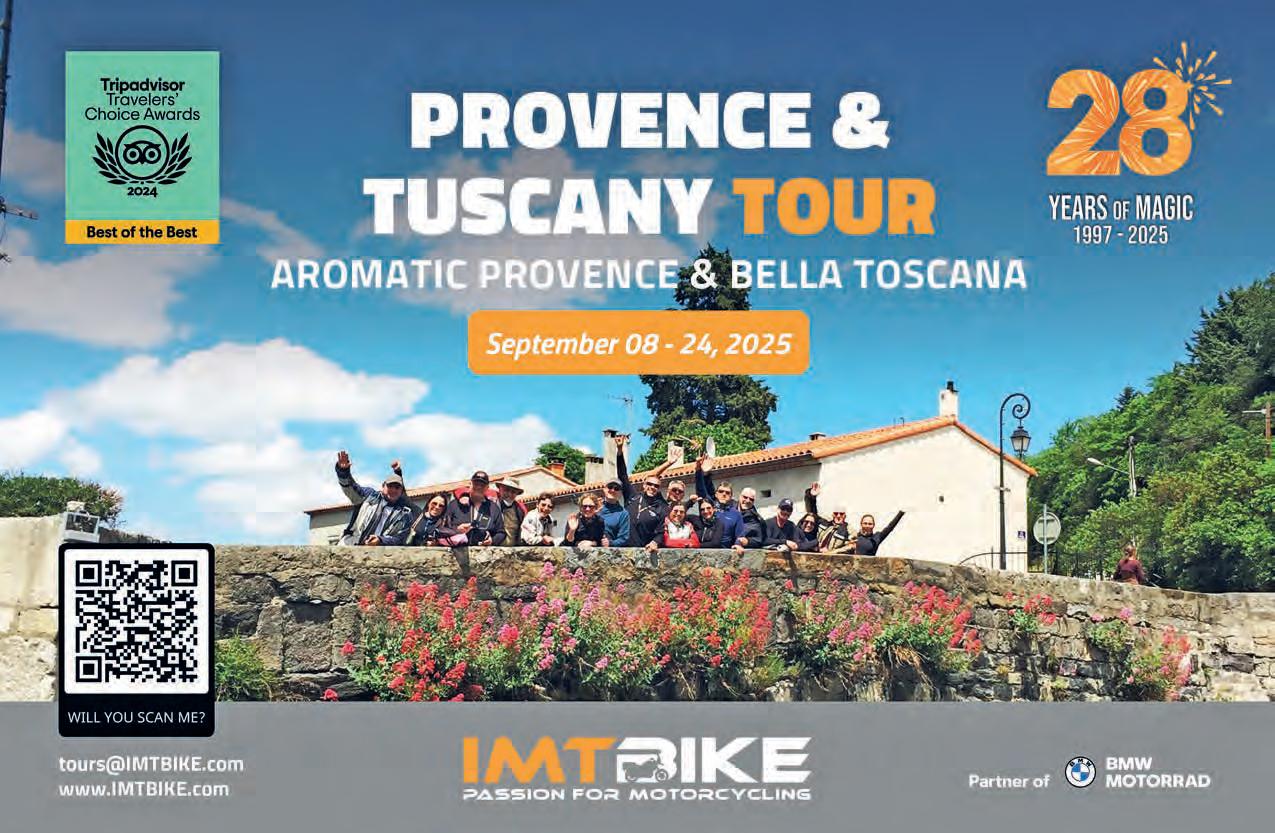
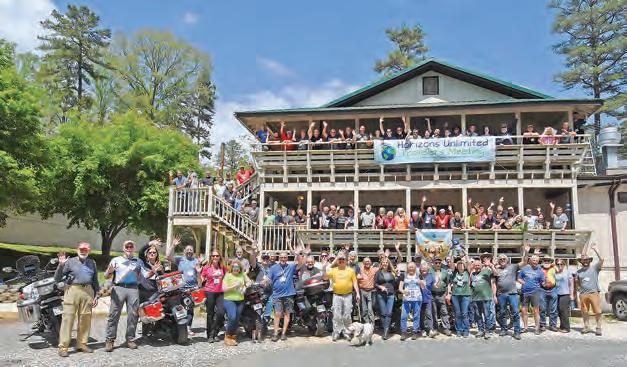
who have literally circled the globe on their bike. Don’t be afraid to ask questions — or share your own experiences! In the last decade, meetings in the U.S. have been in Virginia and California. This fall — October 9-12, 2025, to be exact — a new gathering will be added in upstate New York. Nestled in the Finger Lakes region near Canandaigua, overland enthusiasts will converge on a 4-H camp for a weekend of presentations, tech sessions, self-guided ride-outs, optional off-road training, and fellowship as they enjoy the beautiful fall colors of the region. Available accommodations include staying in bunkhouses or your tent and

meal plans to fit your budget and preferences. Most attendees will be on motorcycles, but there will be space for RV and car campers, as well. You can expect a full schedule of activities to keep you entertained and informed. Presentations can include everything from planning your trip — whether it’s a weekend away or a year on the road — to emergency first aid, dealing with borders, baking (yes, baking) while camping, handling finances while you’re away, prepping your bike and yourself, bike maintenance and tech issues, and much more.
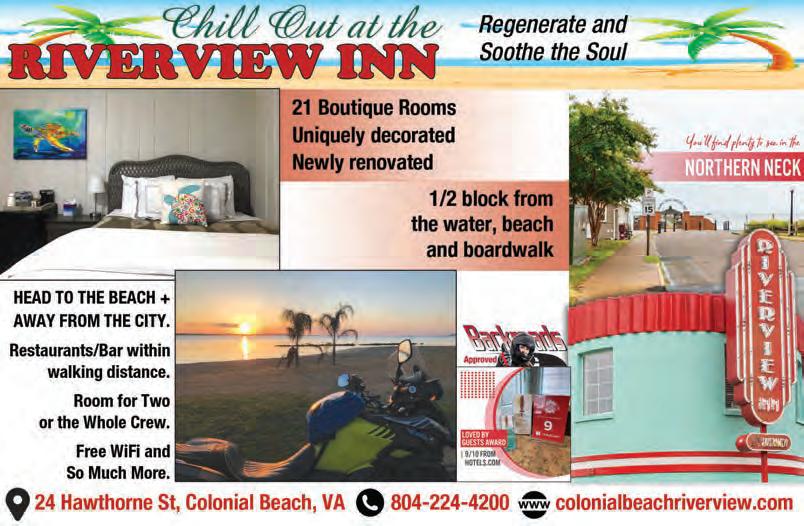

A popular option is an off-road training class with Tom Asher’s TAARA organization, which has been conducting training at the Virginia HU event and elsewhere for years and will be on hand in New York, as well. These Travellers Meetings serve as both a reunion of far-flung friends and a welcoming beacon for those just getting started. Every year, fresh faces arrive with questions and concerns and leave ready to pursue their own overland dreams. If this sounds interesting, and you want to hear from folks ready and willing to share their expertise, check out the details at:
www.horizonsunlimited.com/newyork.

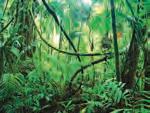
The Law Office of Paul Gargiulo, P.C. presents
the petrichorsaurus
We have written about this ‘smell’ a few times. Petrichor is that earthy, pleasant scent that develops after rain has fallen on dry ground, especially after a warm, dry period. It’s a distinctive aroma often associated with the fresh scent of the Earth.
The term “petrichor” was coined by scientists Isabel Joy Bear and Richard Grenfell Thomas in the 1960s. They used it to describe the smell of dry soil when it first comes into contact with water, or in our case macadam.
Sometimes you can smell the rain before you are even in it, and sometimes it can be a sudden occurrence, like coming around a mountain to be met with the wet.
A column dedicated to your riding survival
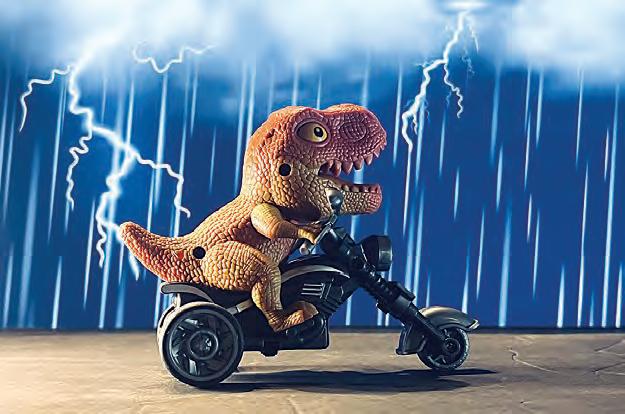
There are some riders who will do anything to stay out of and away from riding in the rain. As if a bit of mizzle is some sort of monster… The Petrichorsaurus.
Ah yes, a big beast, or not, that will roar into your riding day and cause all sorts of moisture-laden mayhem.
Nobody prefers wet over dry – and we know we are easier with the wet when we start in the dry – starting off in the pouring rain, like Kyoto, is just a bummer on every level.
Still, for those of you who will not ride in the rain, no matter what, the question is - why?
Is it because you are worried that your bike will get dirty? Well, we have no answer for that; or is it that that wet pavement simply gives you the willies? Hmmm? This we can talk about.
Be Prepared. Always.
Suitable riding gear is key to piloting well in bad weather. If you are cold and wet, or worse – your head and body will not be in the game. There are plenty of pants, jackets, gloves, and boots that can handle a good dousing without giving up the ghost. If you have a full-face helmet, consider adding a Pinlock anti-fog insert to your shield. Even simple rain gear can be the difference between carrying on safely and somewhat comfortably and sitting in a WaWa or Royal Farms singing old Doors’ songs. So, you have the gear, but do you have the skill? If you are a competent rider in the dry – then we say yes. Yes, you do have the skill.
The most important word to remember in the rain is ‘smooth’. As Reg Pridmore has drummed into our heads… it is all about smooth – in the dry and especially the rain. Roll on and off the throttle in an easy and determined manner. Your machine’s throttle is your friend, so don’t upset it with abrupt and jerky throttle control.
A happy bike is a happy ride, and rider. Braking also needs to be as smooth as you can muster. Easy to say.
But let’s practice. Go get a small, soft orange or tangerine (better). Practice slowly and steadily squeezing the fruit, and then releasing in the same manner. Soft squeeze, hold…. then equally soft release. Do this 101 times. Then eat the tangerine.

The exercise will not work if you have scurvy. It’s a terrible disease that sailors could have avoided if they had practiced their Braking in the Rain exercises more often. Learn to use your engine as a brake, especially as you are setting yourself up for some curves – again in the smoothest fashion.
Pick and choose your bike’s placement, avoiding shiny pavement and steel grating, as they are points of enhanced gravity and could bite the smoothest rider. Be
situationally aware of everything. Your eyes should always be on the move taking in potentials, and the downright craziness that will be trying to get around in the rain too. If you are on heightened Rain Alert – then know everyone on the road most likely is as well. Stay sharp.
You want to be noticeable too.
All that Sade’ Smooth Operator smooth stuff might get tossed out or, or through, the window, when Granny or Texting Tessa, makes that left turn in front of you. Stay sharp. Stay ready. Stay calm.
Your bike is far more capable than that Camry.
Conspicuity is important. Bright riding gear and extra lighting will make you stand out in a sea of cars, trucks and crazed squirrels.
Dark riding gear is…well, dark.
Well-armed with proper gear, skill, and a pure heart you can ride forth into the storm and slay the dreaded Petrichorsaurus. And the people go Hazzah!


